
Category of Astronomical Heritage: tangible immovable
Convento de Belén Observatory, Havana, Cuba

Format: IAU - Outstanding Astronomical Heritage
Description
Geographical position - InfoTheme: Astronomy from the Renaissance to the mid-twentieth century
Entity: 188
Subentity: 1
Version: 2
Status: PUB
Date: 2021-04-21 06:47:24
Author(s): Gudrun Wolfschmidt
Meteorological and astronomical Observatory --
Jesuit Convento e Iglesia de Nuestra Señora de Belén,
Calle Compostela, between Luz y Acosta, Havana Vieja, Cuba
Location - InfoTheme: Astronomy from the Renaissance to the mid-twentieth century
Entity: 188
Subentity: 1
Version: 2
Status: PUB
Date: 2021-04-21 06:47:59
Author(s): Gudrun Wolfschmidt
Latitude 23.132991 N, Longitude 82.353212 W. Elevation ...m above mean sea level.
IAU observatory code - InfoTheme: Astronomy from the Renaissance to the mid-twentieth century
Entity: 188
Subentity: 1
Version: 1
Status: PUB
Date: 2021-04-21 06:44:47
Author(s): Gudrun Wolfschmidt
-
Description of (scientific/cultural/natural) heritage - InfoTheme: Astronomy from the Renaissance to the mid-twentieth century
Entity: 188
Subentity: 1
Version: 3
Status: PUB
Date: 2021-05-07 00:43:13
Author(s): Gudrun Wolfschmidt
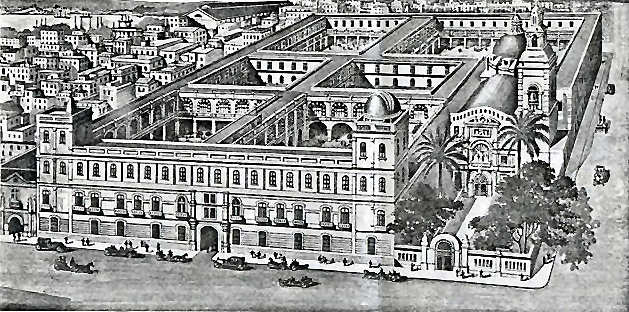
Fig. 1a. Jesuit Convento de Belén (1854--1925) (Wikipedia)
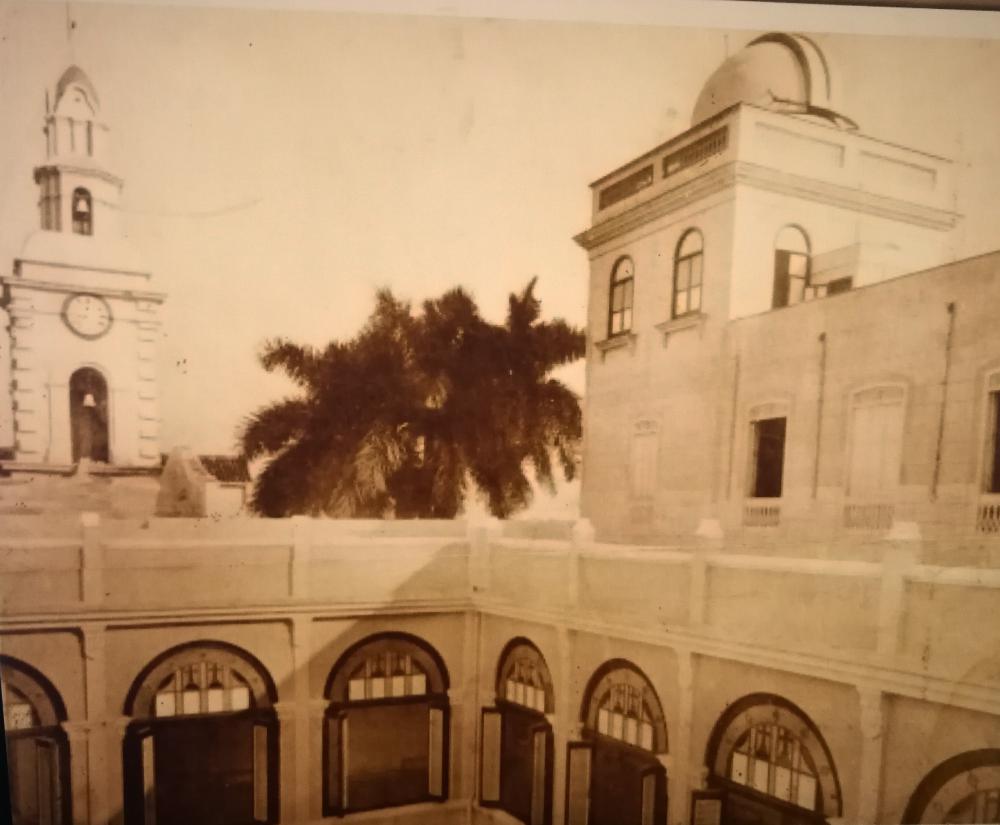
Fig. 1b. Observatorio de Belén (1857--1925) (Photo: Gudrun Wolfschmidt)
The Jesuit Convento de Belén, Convento e Iglesia de Nuestra Señora de Belén, was founded in 1854, and existed until 1925, when a new Jesuit College in Mariana near Havana was established.
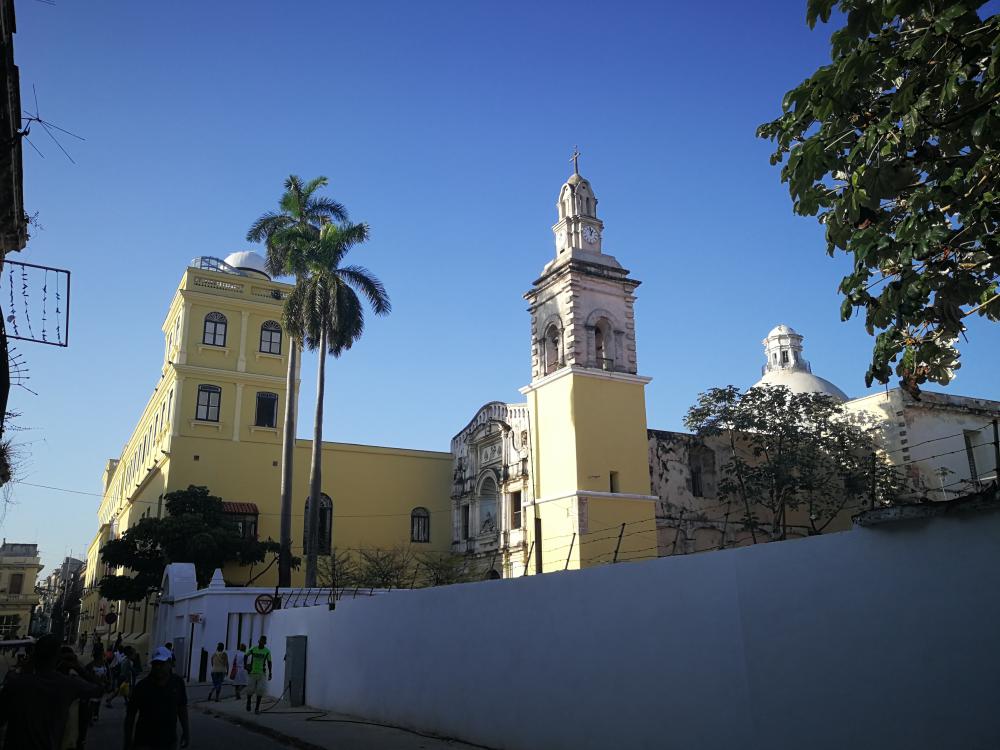
Fig. 2a. Observatorio de Belén (1857--1925) (Photo: Gudrun Wolfschmidt)
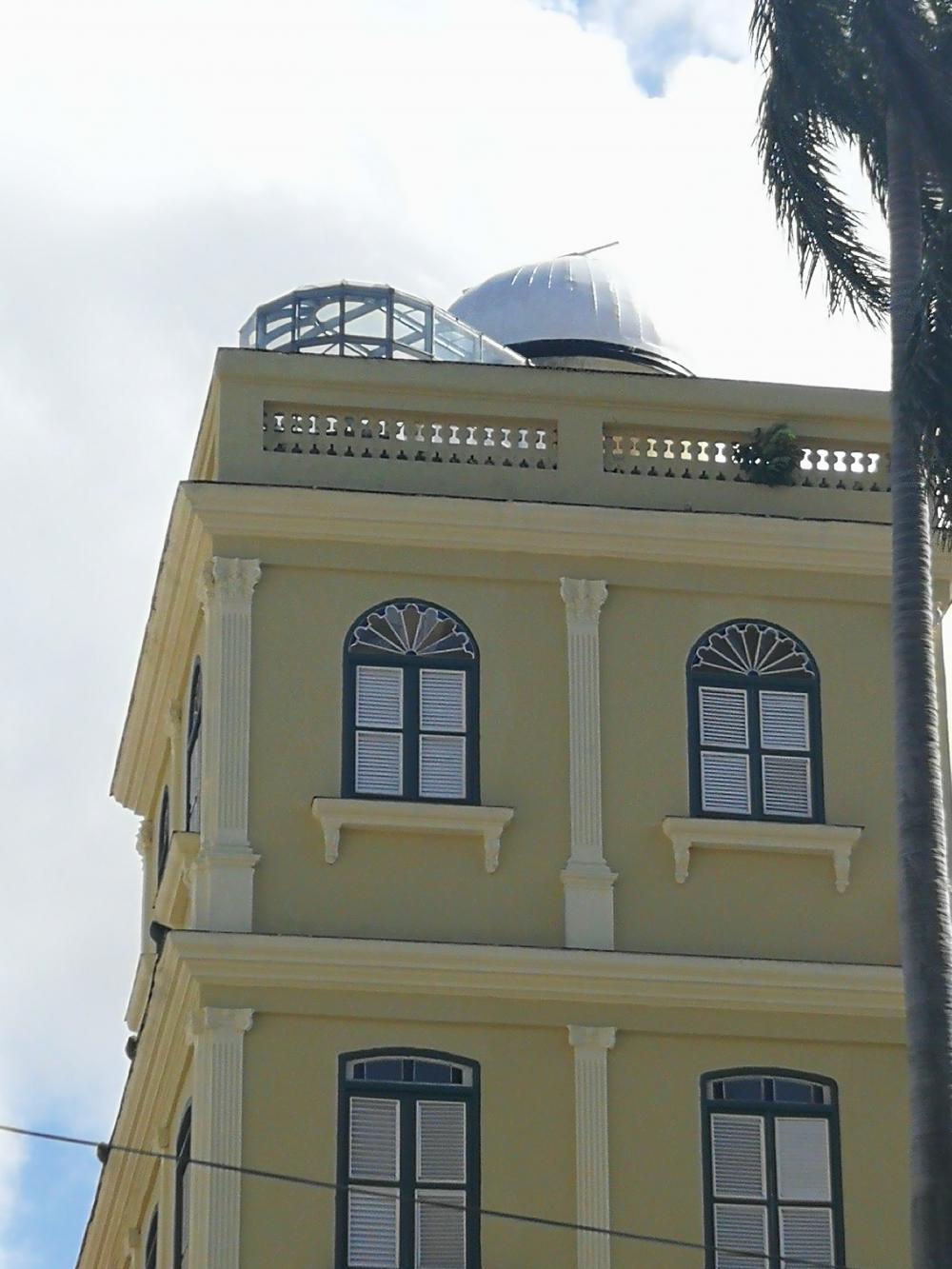
Fig. 2b. Observatorio de Belén (1857--1925) (Photo: Gudrun Wolfschmidt)
Jesuits and Colonial Science
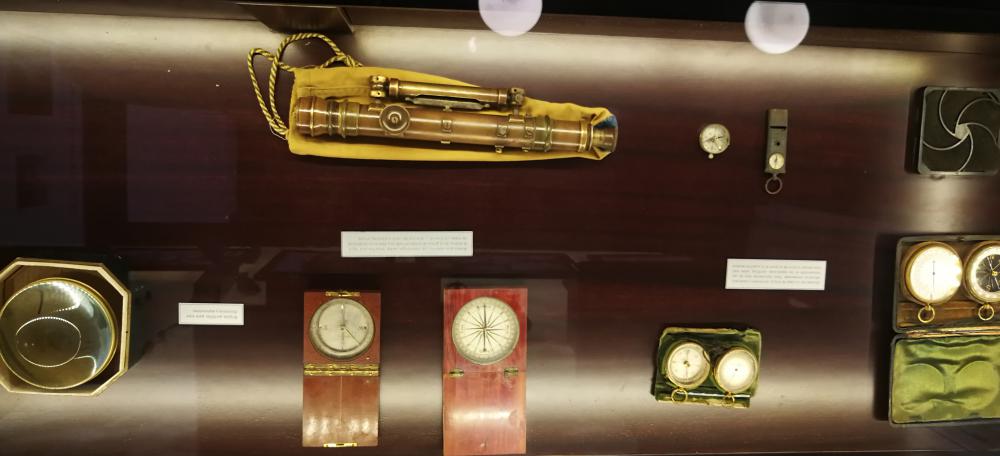
Fig. 3. Instrument Collection in Observatorio de Belén (Photo: Gudrun Wolfschmidt)
Astronomy, timekeeping, solar observations, meteorology, terrestrial magnetism, and seismology played an important role in imperial expansion during the age of empire. After the suppression of the Society of Jesus (1773--1814) and the regeneration, Jesuit observatories were revived or newly erected in the 19th century, e.g., outposts of scientific excellence were established in the tropics, besides Havana, Cuba, at Manila (Philippines, est. 1865), Zikawei (China, est. 1872), and Tananarive (now Antananarivo, Madagascar, est. 1889).
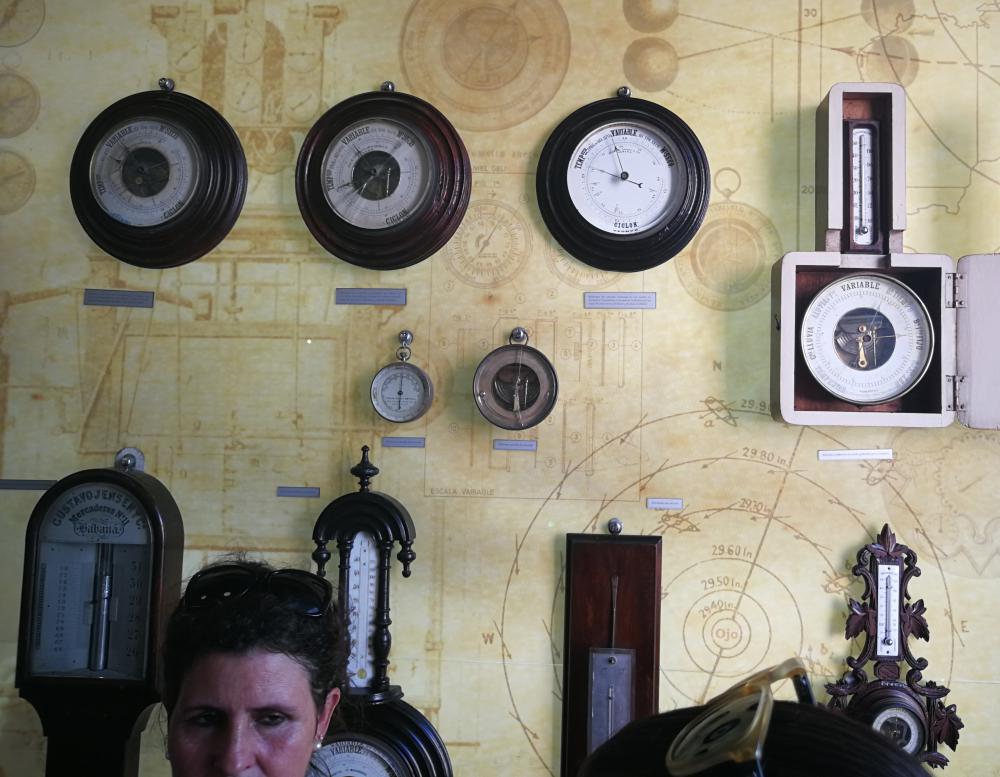
Fig. 4a. Meteorological ana astronomical Instruments, Observatorio de Belén (Photo: Gudrun Wolfschmidt)
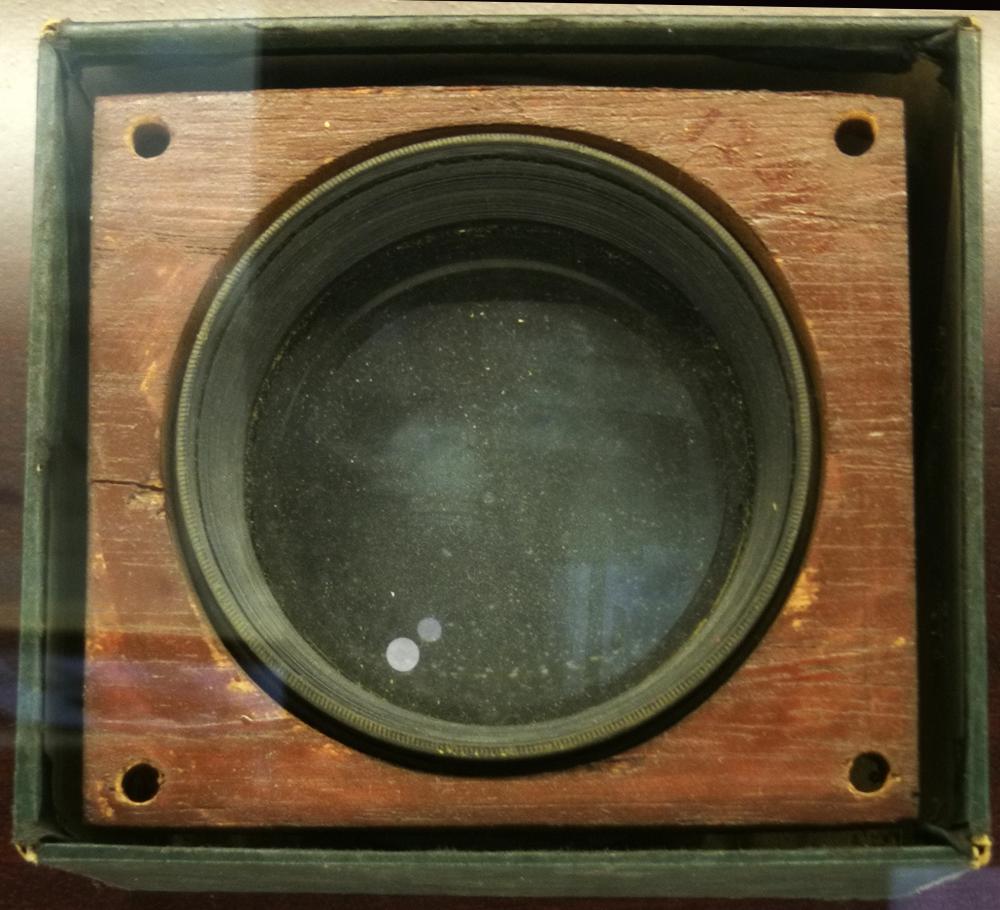
Fig. 4b. Observatorio de Belén (Photo: Gudrun Wolfschmidt)
The Belén Magnetic, Meteorological and Astronomical Observatory was established in 1857.
The Real Observatorio (Royal Observatory), built in 1858 in Neo-Baroque style on top of the tower of the College. Benito Viñes (1837--1893) wanted "to provide a service to my brothers and contribute something to the advancement of science and the well-being of humanity" (quoted in Ramos & Enrique, 1996, p. 1).
Benito Viñes and the Hurricane Forecast
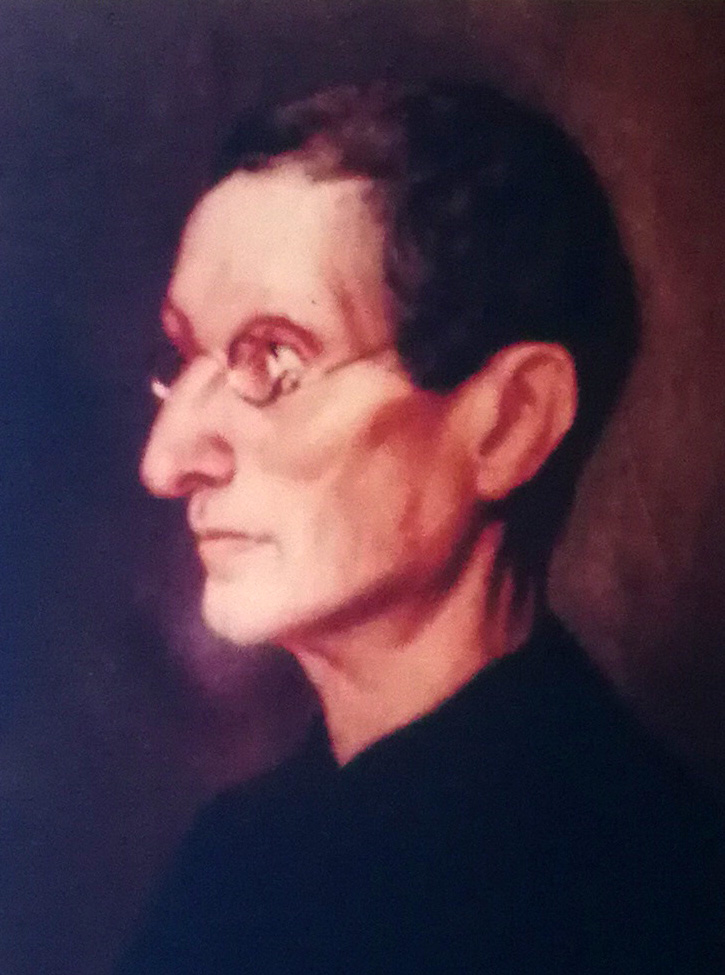
Fig. 5. Benito Viñes (1837--1893) (Photo: Gudrun Wolfschmidt)
Benito Viñes (1837--1893) started the investigation of the cyclonic circulation and the translatory movement of West Indian hurricanes. In 1882, Viñes journeyed across the Atlantic -- in cooperation with Stephen Perry, director of the Jesuit Observatory of Stonyhurst College in England -- to purchase instruments in Europe. Viñes "modeled these empirical laws, ultimately, on the geometric laws of planetary motion of Johannes Kepler". He prepared the presention of his influential work at the Columbian Exposition in Chicago (1893). Storm notebooks, correspondence, and other archival materials are at the Centro de Estudio de Historia de la Ciencia y la Tecnología and the Instituto de Meteorología, Ministerio de Ciencia, Tecnología y Medio Ambiente, both in Havana, Cuba.
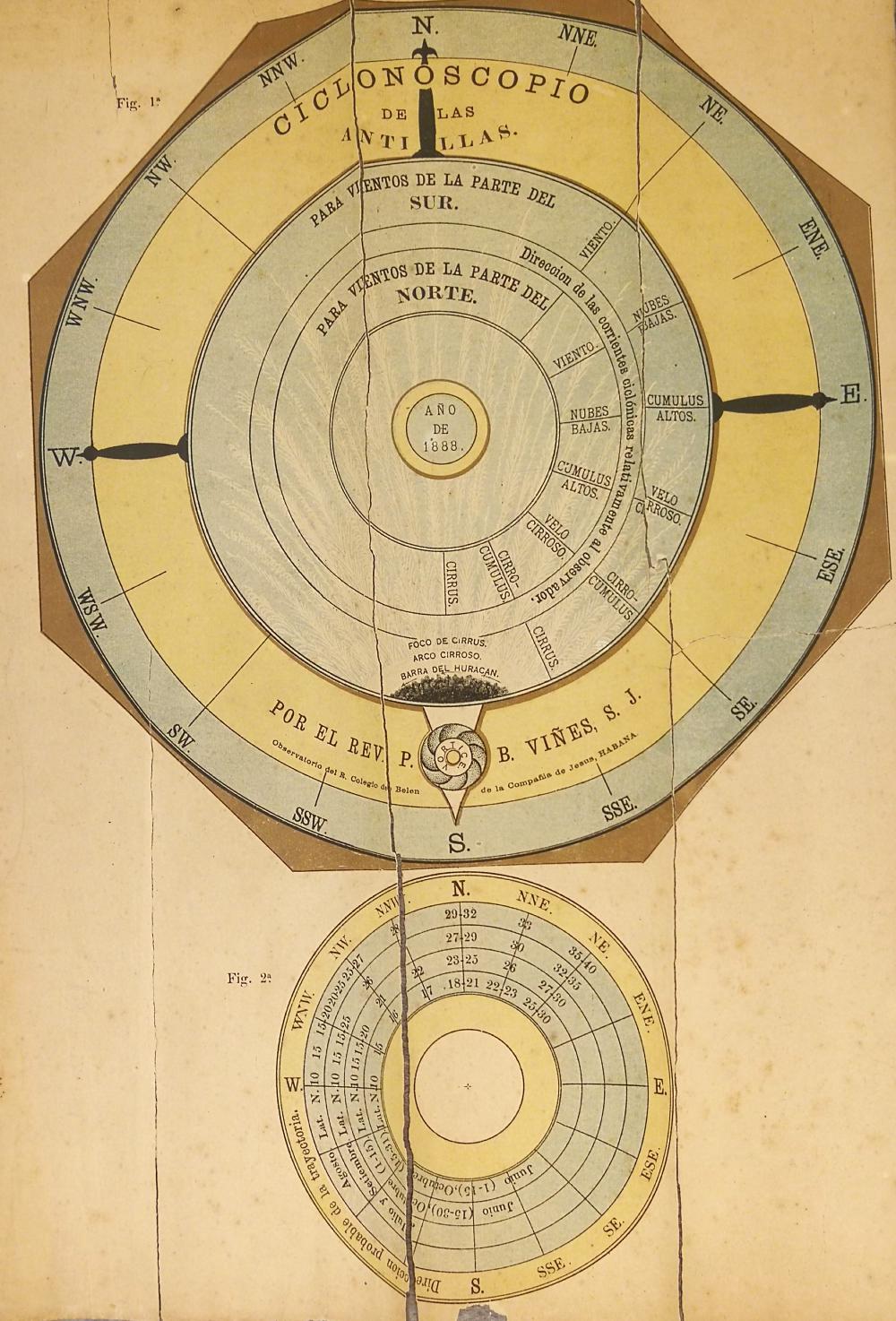
Fig. 6. Ciclonoscopio por el Rev. P. B. Viñes, S.J., Collegio de Belén, Habana (1888) (Photo: Gudrun Wolfschmidt)
Benito Viñes did also astronomical work; he observed the Transit of Venus in December 1882, and he also reported magnetic observations from the tropics as part of the First International Polar Year (1882--1883).
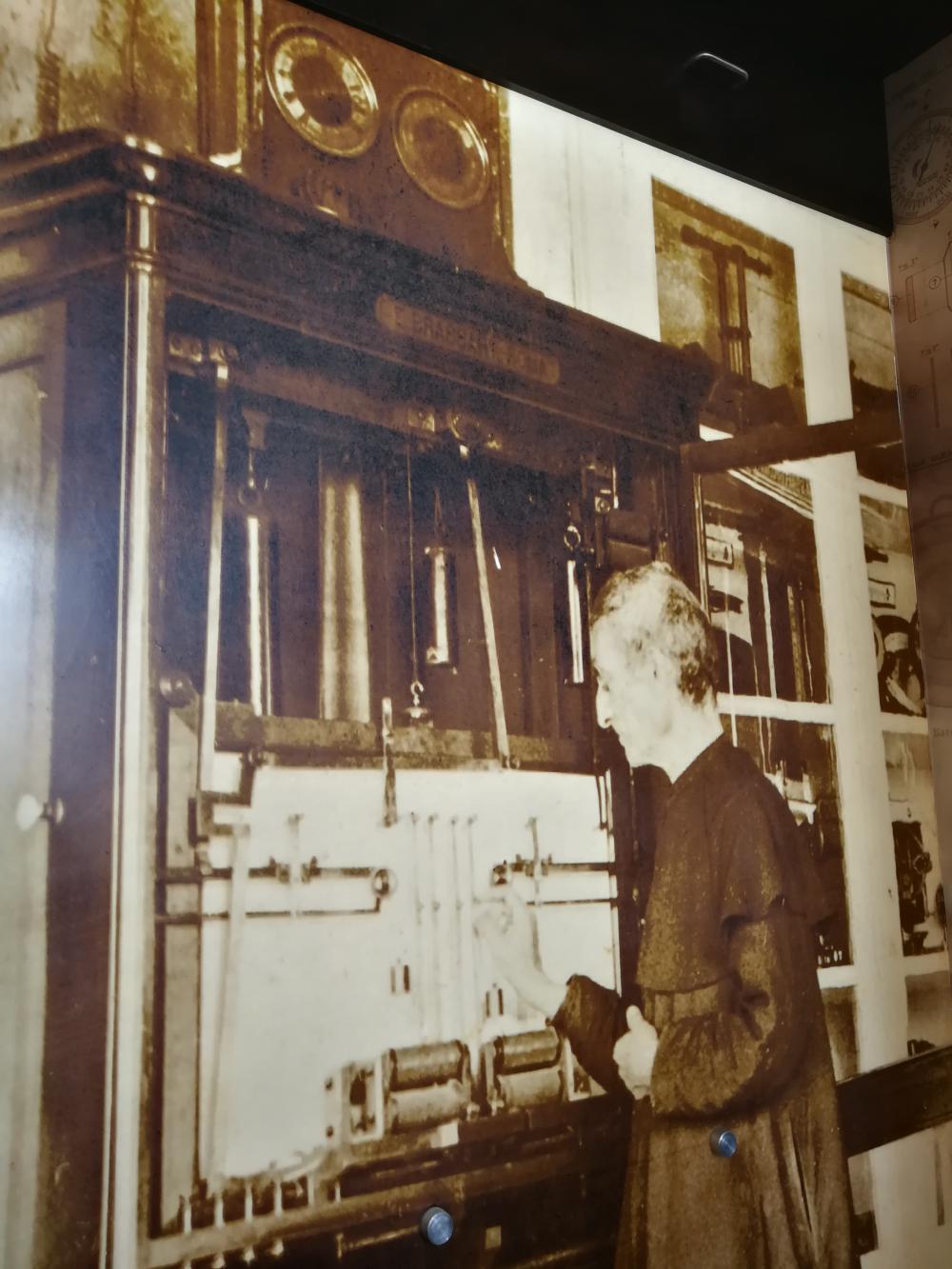
Fig. 7a. Father Viñes with Secchi’s Meteorograph, Observatorio de Belén, 1880s (Photo: Gudrun Wolfschmidt)
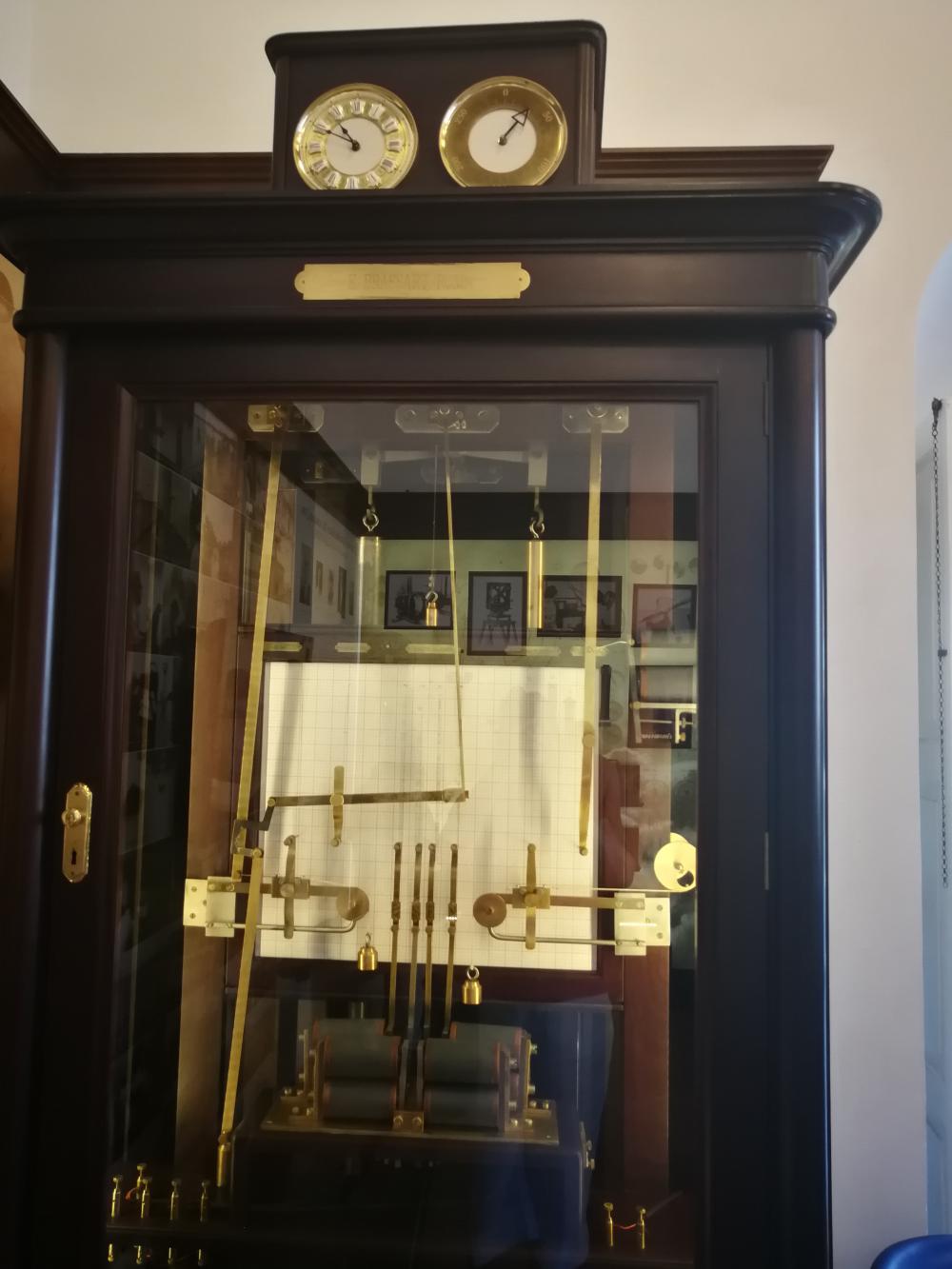
Fig. 7b. Observatorio de Belén (Photo: Gudrun Wolfschmidt)
The highlight of the instrument collection of the Collegio de Belén is Secchi’s Meteorograph, useful to measure and to record multiple meteorological parameters at the same time: such as temperature, barometric pressure, wind speed, quantity of rain, etc. The Meteorograph was designed by Angelo Secchi (1878--1818), 1857 to 1867, later made by Fratelli Brassart, Rome. The first one was installed at the new Collegio Romano Observatory on the roof of St. Ignatius Church in Rome.
Original meteorographs can be found e.g. in the historical collections of INAF-Rome Astronomical Observatory at Monte Porzio Catone near Rome, in Zi-ka-wei, Chinam, and in St. Ignatius College, Cleveland, Ohio.
History - InfoTheme: Astronomy from the Renaissance to the mid-twentieth century
Entity: 188
Subentity: 1
Version: 5
Status: PUB
Date: 2021-09-14 13:29:43
Author(s): Gudrun Wolfschmidt
Instruments of the Collegio de Belén
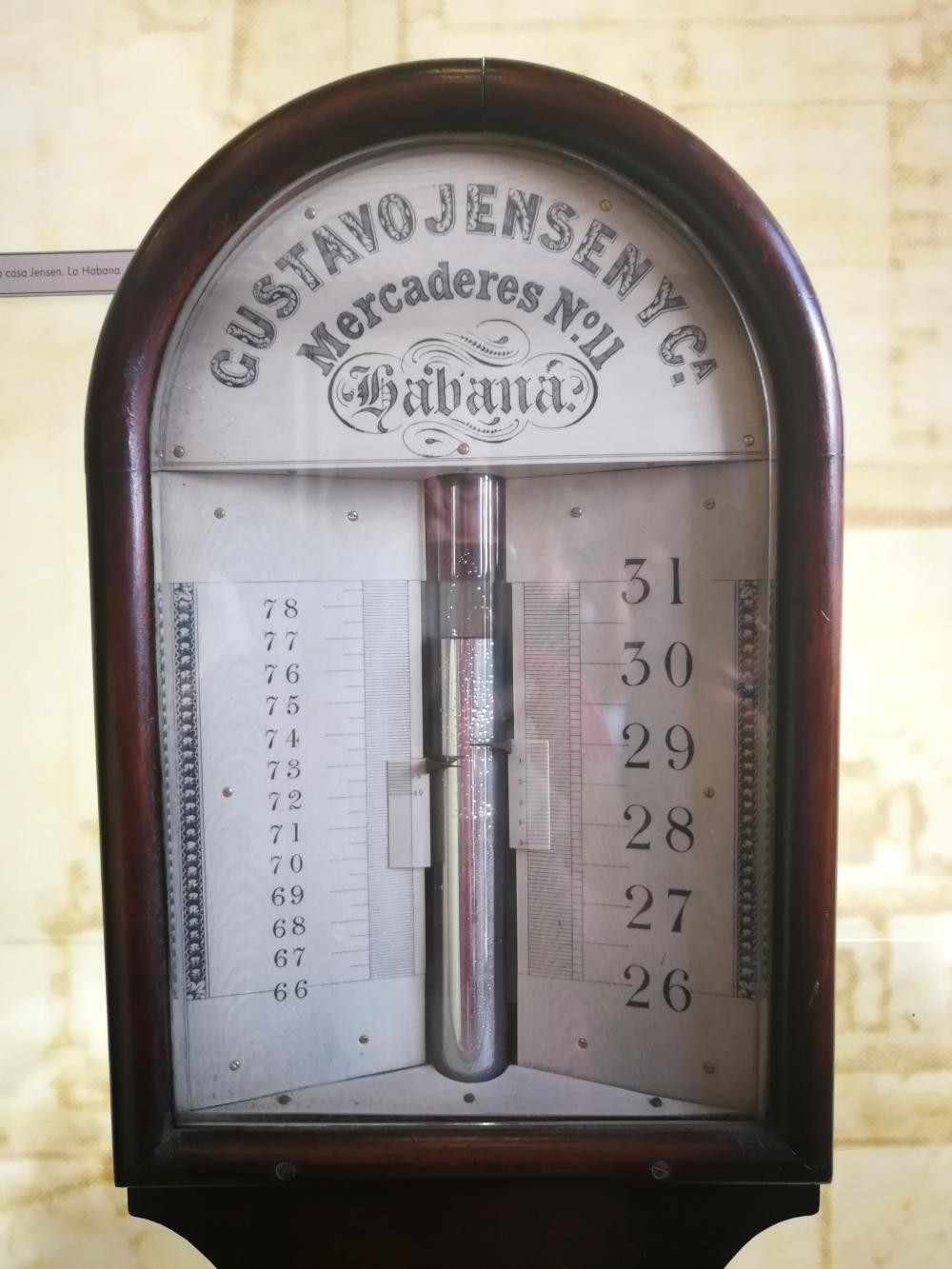
Fig. 8a. Barometer, Gustavo Jensen y Ca., Habana, Observatorio de Belén (Photo: Gudrun Wolfschmidt)
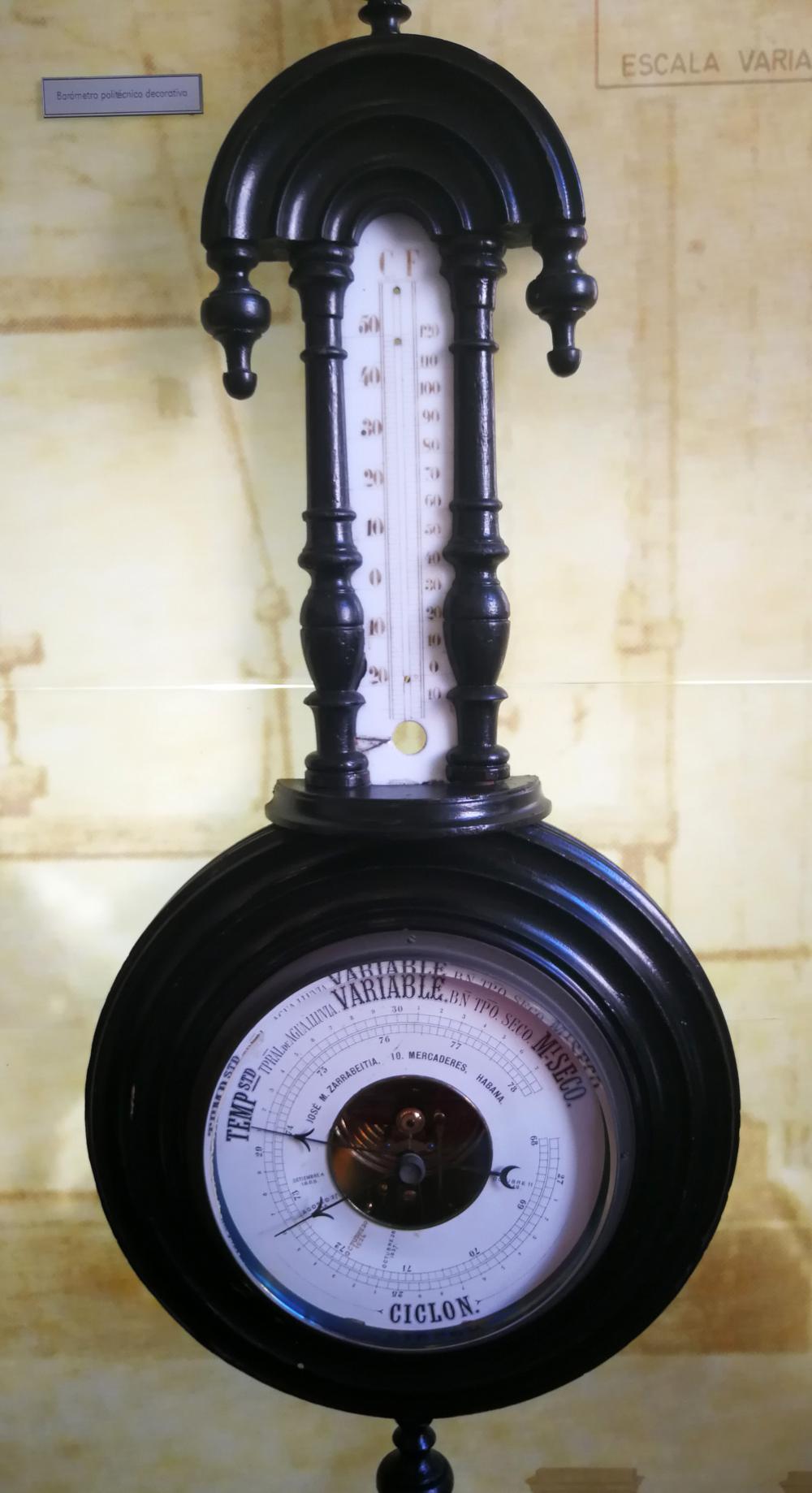
Fig. 8b. Barometer, José M. Zarrabeitia, Habana, Observatorio de Belén (Photo: Gudrun Wolfschmidt)
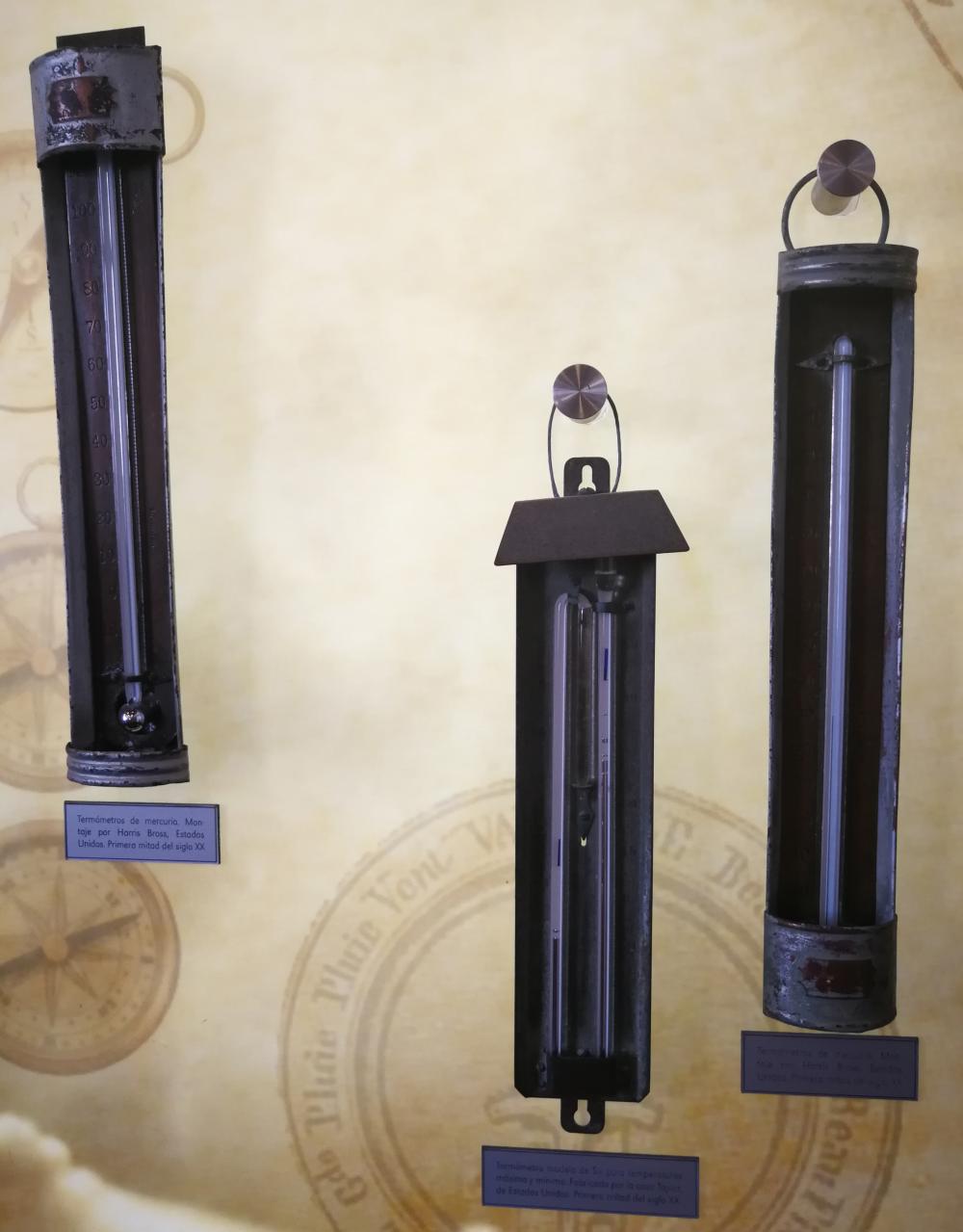
Fig. 8c. Mercury Thermometers, Observatorio de Belén (Photo: Gudrun Wolfschmidt)
- Meteorological instruments:
- Secchi’s Meteorograph (1873), replica
- Mercury Thermometer, Harris Bros., USA (beginning of 20th c.)
- Max-Min-Thermometer, Taylor, USA (beginning of 20th c.)
- Barometer, Gustavo Jensen y Ca., Habana,
- Barometer, José M. Zarrabeitia, Habana
- Anemometer (a spinning wheel, which measures the wind speed)
- Psychrometer (measures humidity)
- Meteograph (temperature, humidity and air pressure)
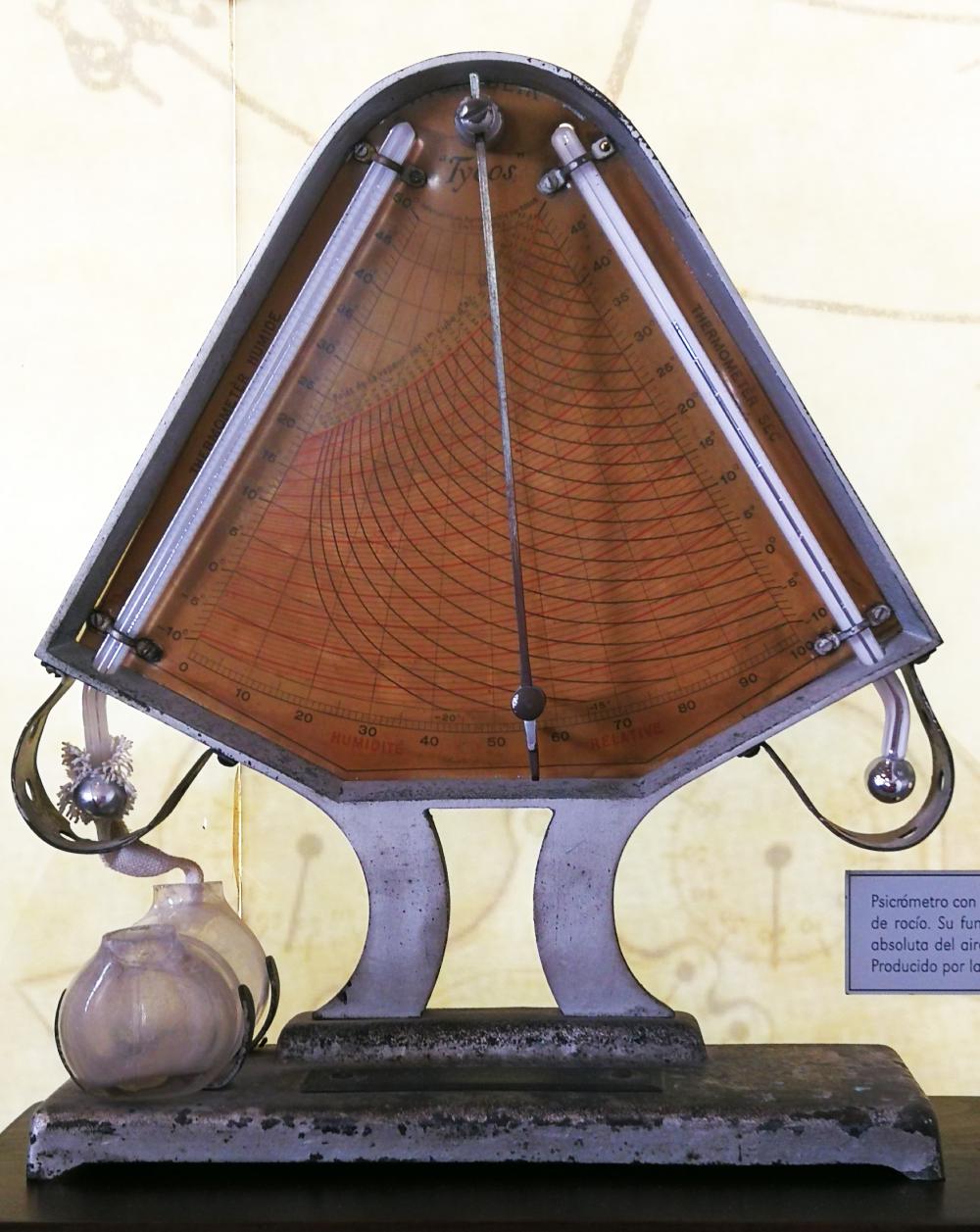
Fig. 9a. Observatorio de Belén (Photo: Gudrun Wolfschmidt)
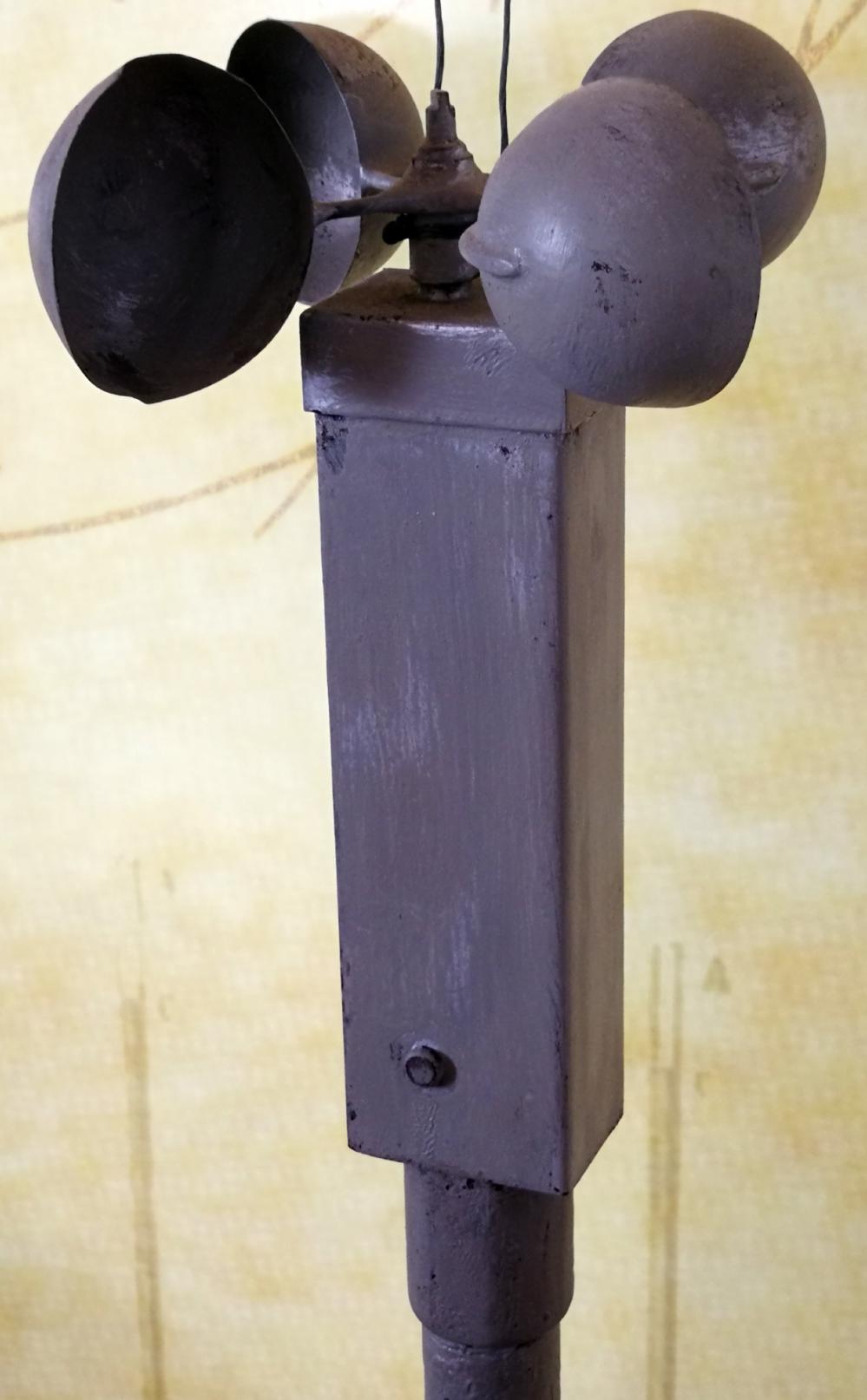
Fig. 9b. Anemometer, Observatorio de Belén (Photo: Gudrun Wolfschmidt)
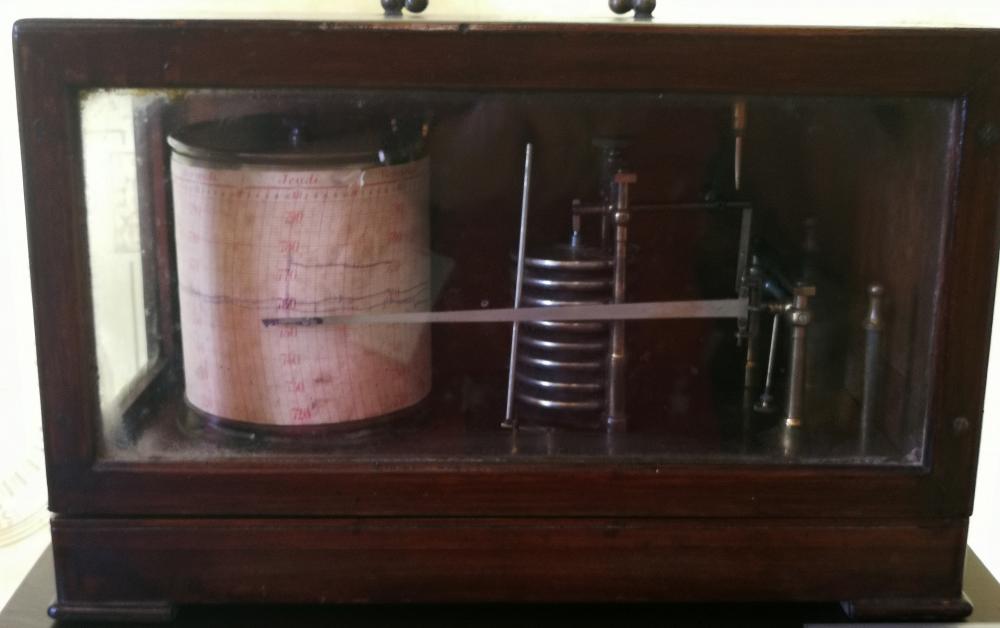
Fig. 9c. Meteograph, Observatorio de Belén (Photo: Gudrun Wolfschmidt)
Camera obscura (end of 19th c.)
Astronomical instruments, cf. 17th century telescopes
Comet seeker
Pendulum Clock
Surveying instrument
Ciclonoscopio por el Rev. P. B. Viñes, S.J., Collegio de Belén, Habana (1888)
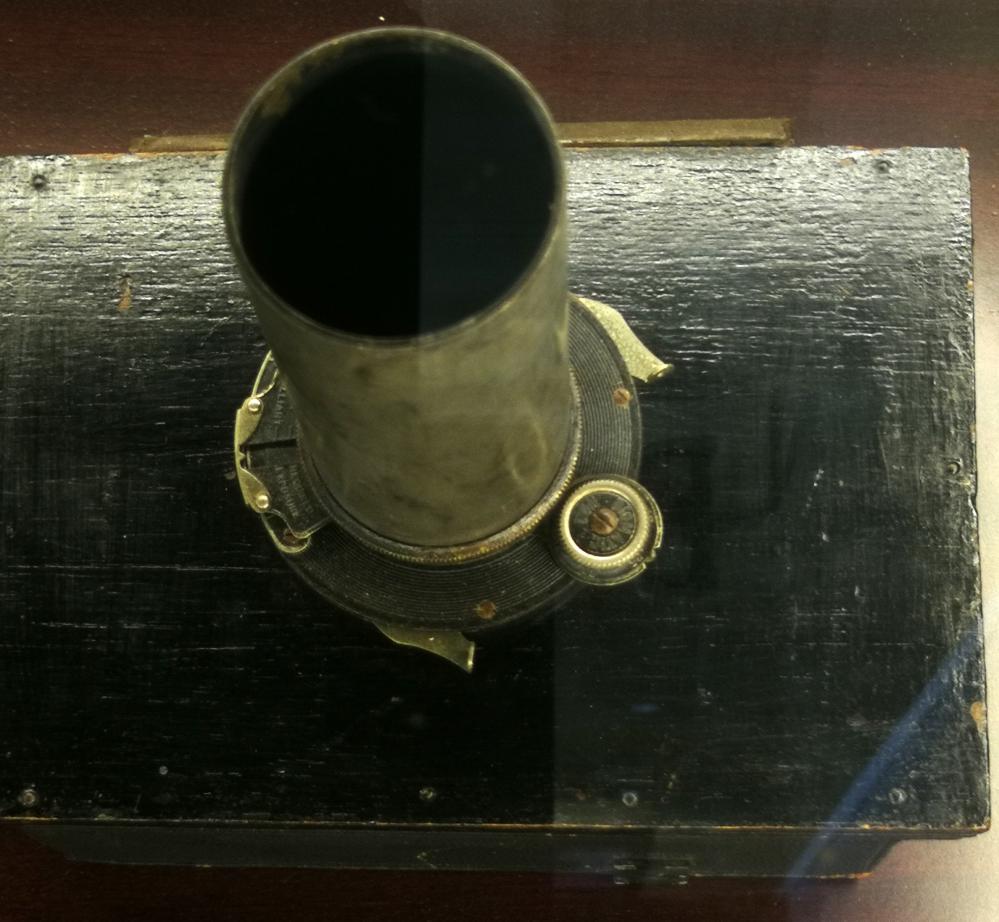
Fig. 10a. Camera obscura, Observatorio de Belén (Photo: Gudrun Wolfschmidt)
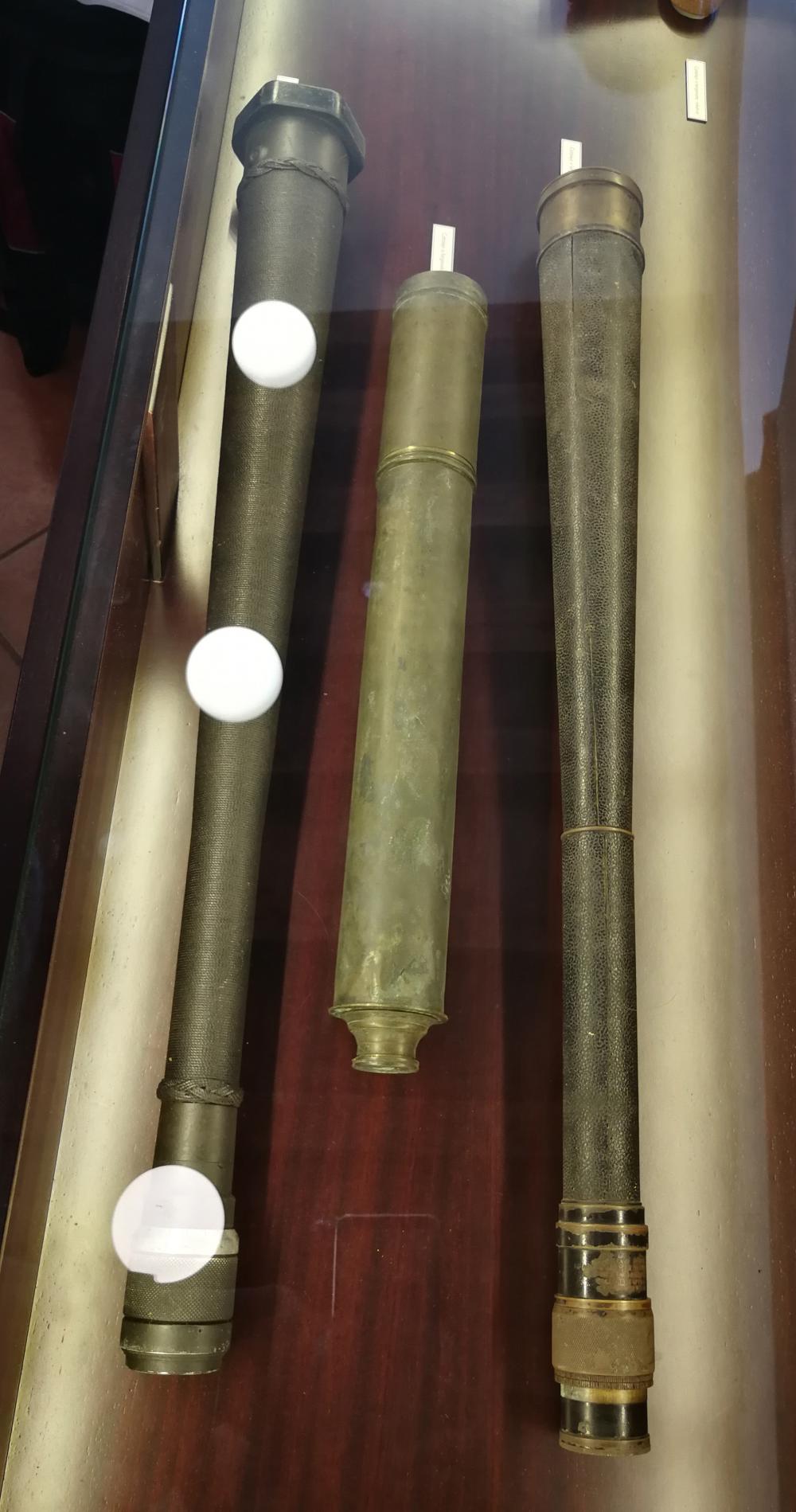
Fig. 10b. Early Telescopes, Observatorio de Belén (Photo: Gudrun Wolfschmidt)
Directors of the Collegio de Belén
- 1858 to 1860 -- Antonio Cabré (1829--1883), SJ
- 1860 to 1962 -- Francisco Butiñá, SJ
- 1862 to 1863 -- Felice Ciampi, SJ
- 1863 to 1864 -- Francisco Butiñá, SJ
- 1864 to 1867 -- José Reynal, SJ
- 1867 to 1868 -- Francisco Pons, SJ
- 1869 to 1869 -- José Maria Vélez, SJ
- 1870 to 1893 -- Carlos Benito José Viñes Martorell (1837--1893), SJ
- 1893 to 1925 -- Lorenzo Gangoiti, SJ
- 1943 to 1947 -- Simón Sarasola, SJ
- 1947 to 1961 -- José Rafael Goberna, SJ
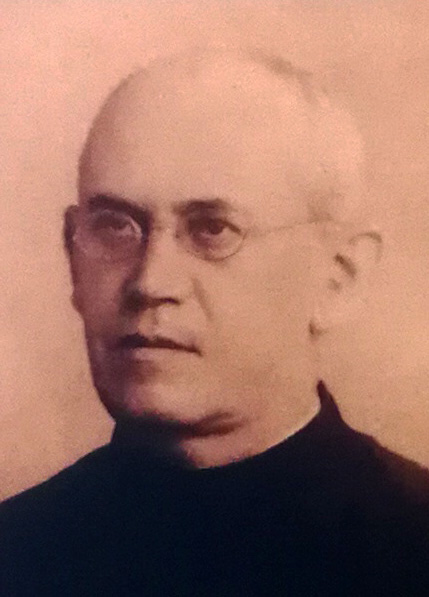
Fig. 11a. Lorenzo Gangoiti, SJ, and Lorenzo Gangoiti, SJ (Photo: Gudrun Wolfschmidt)
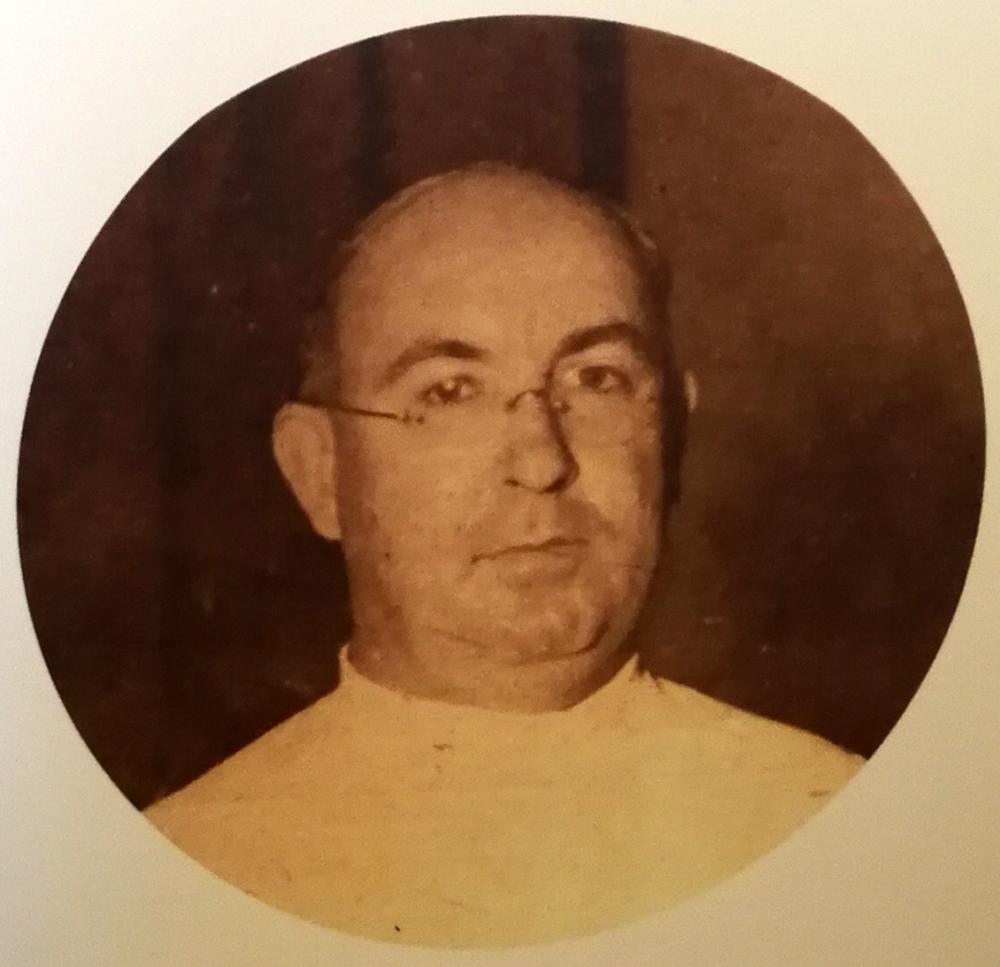
Fig. 11b. Observatorio de Belén (Photo: Gudrun Wolfschmidt)
State of preservation - InfoTheme: Astronomy from the Renaissance to the mid-twentieth century
Entity: 188
Subentity: 1
Version: 3
Status: PUB
Date: 2021-05-07 00:45:17
Author(s): Gudrun Wolfschmidt
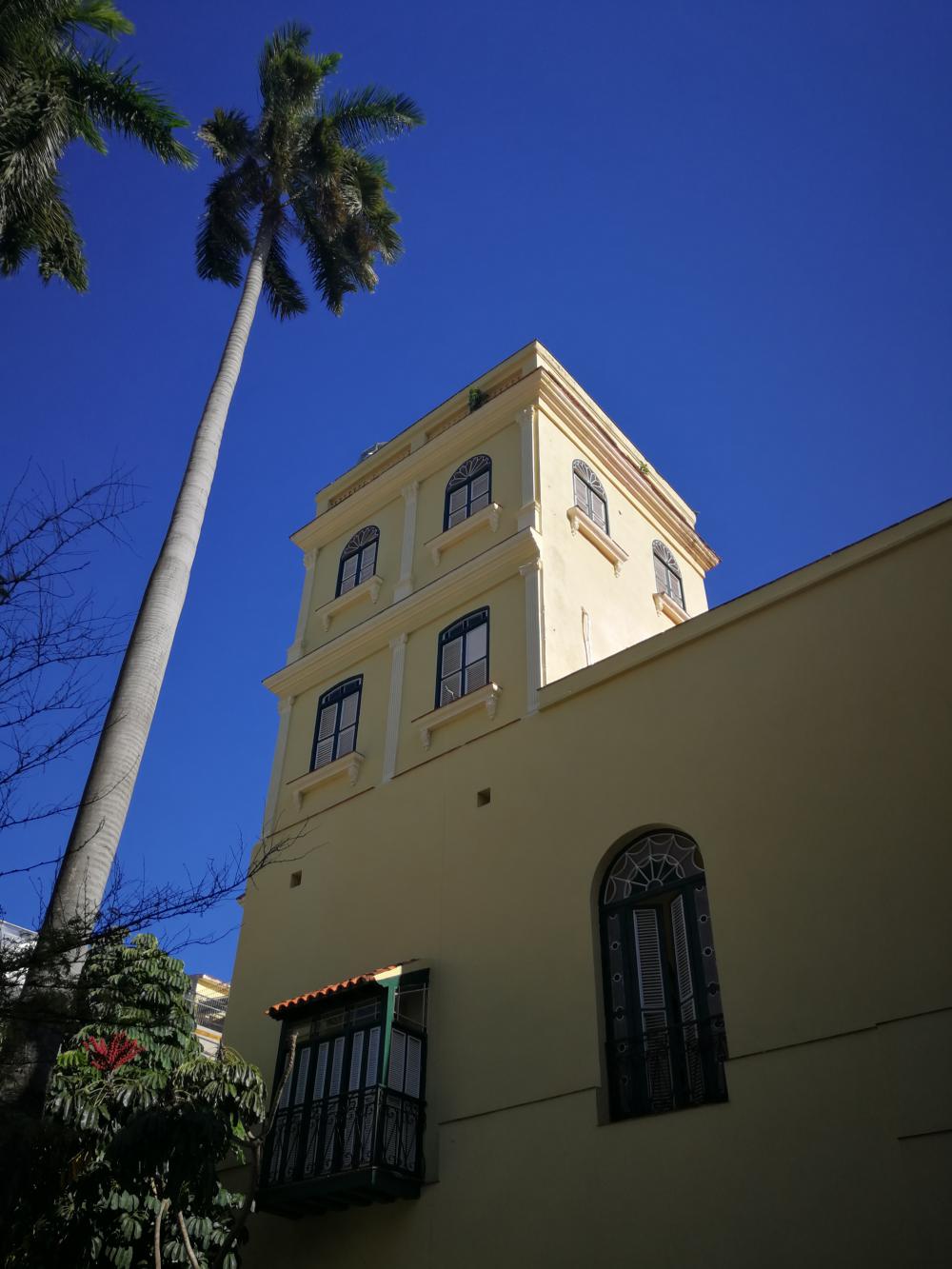
Fig. 12a. Observatorio de Belén (1857--1925) (Photo: Gudrun Wolfschmidt)
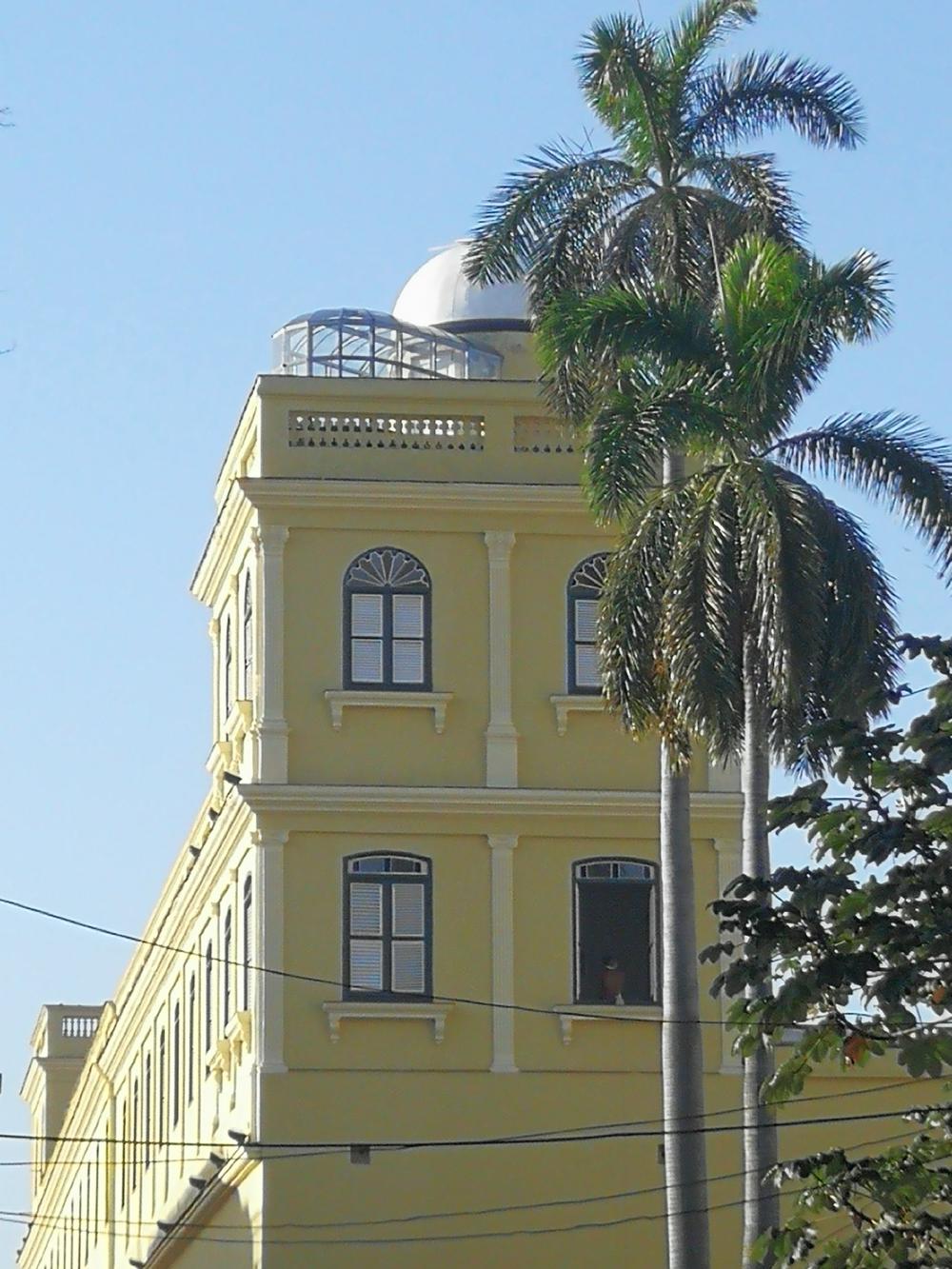
Fig. 12b. Observatorio de Belén (1857--1925) (Photo: Gudrun Wolfschmidt)
The Convento de Belén (1854) is preserved in good condition.
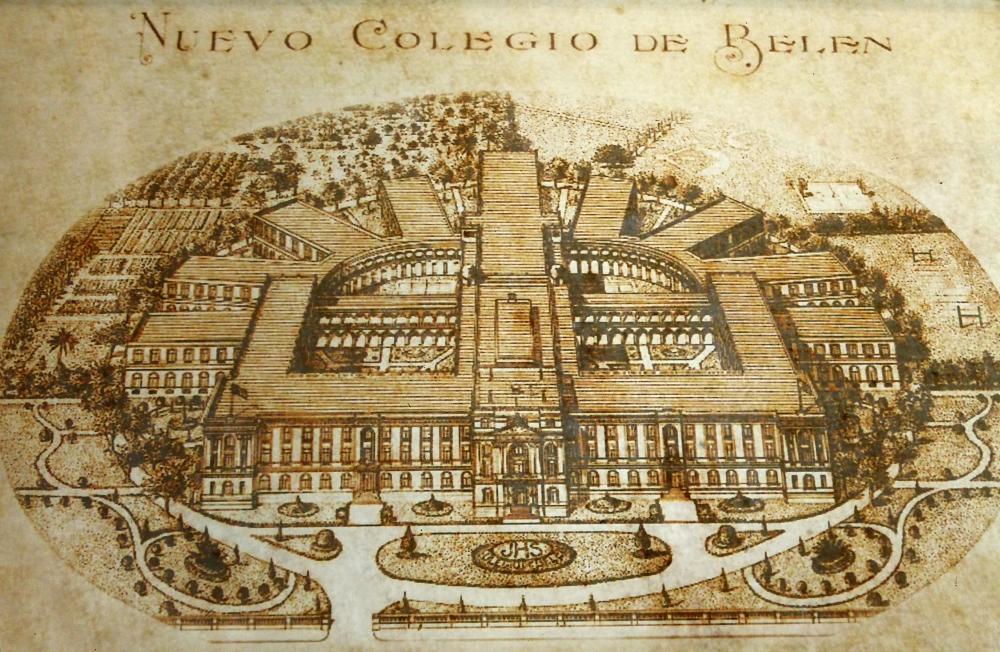
Fig. 13. New Jesuit College Belén (1925) (Photo: Gudrun Wolfschmidt)
The new Jesuit College Belén / Nuevo Colegio de Belén was designed by the Cuban architectural firm of Morales & Cia (Leonardo Morales y Pedroso) in 1925 in Marianao -- with an extensive neoclassical façade and four large courtyards.
In 1961 the government of Fidel Castro (a former graduate of Belén) confiscated all private and religious schools in Cuba. Castro expelled the Jesuits and declared the government of Cuba an atheist government.
Comparison with related/similar sites - InfoTheme: Astronomy from the Renaissance to the mid-twentieth century
Entity: 188
Subentity: 1
Version: 3
Status: PUB
Date: 2021-05-07 00:46:30
Author(s): Gudrun Wolfschmidt
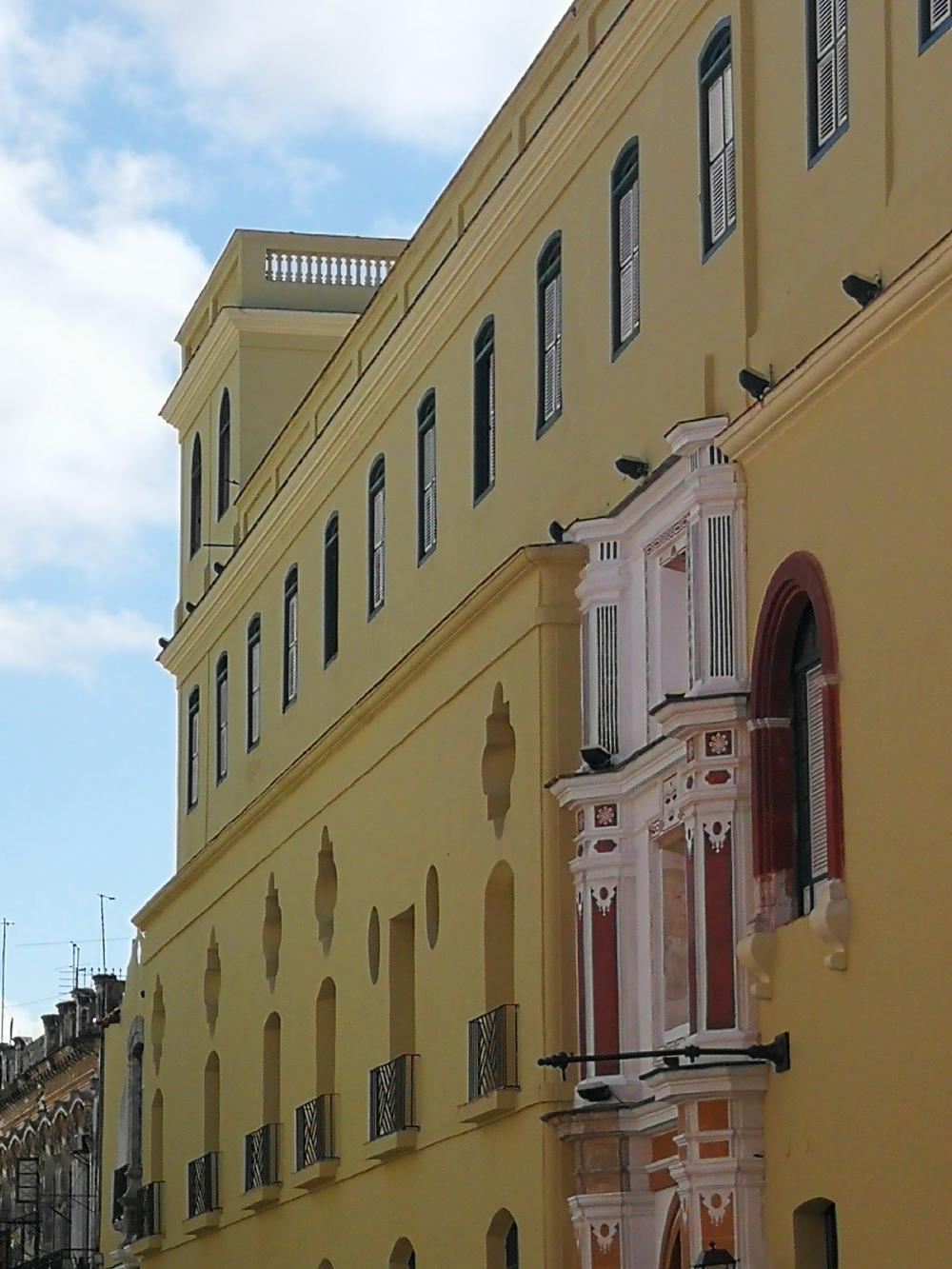
Fig. 14. Observatorio de Belén (1857--1925) (Photo: Gudrun Wolfschmidt)
Cf. Warsaw Observatory
Threats or potential threats - InfoTheme: Astronomy from the Renaissance to the mid-twentieth century
Entity: 188
Subentity: 1
Version: 2
Status: PUB
Date: 2021-04-21 06:49:35
Author(s): Gudrun Wolfschmidt
no threats
Present use - InfoTheme: Astronomy from the Renaissance to the mid-twentieth century
Entity: 188
Subentity: 1
Version: 3
Status: PUB
Date: 2021-05-07 00:47:04
Author(s): Gudrun Wolfschmidt
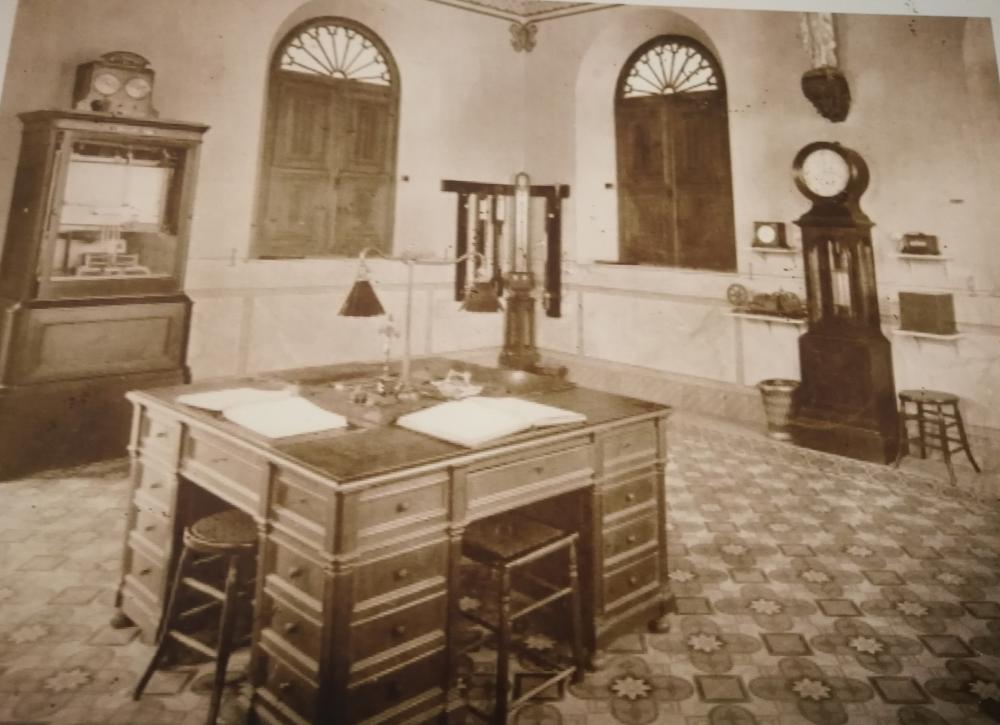
Fig. 15a. Museum of the Jesuit College Belén (Photo: Gudrun Wolfschmidt)
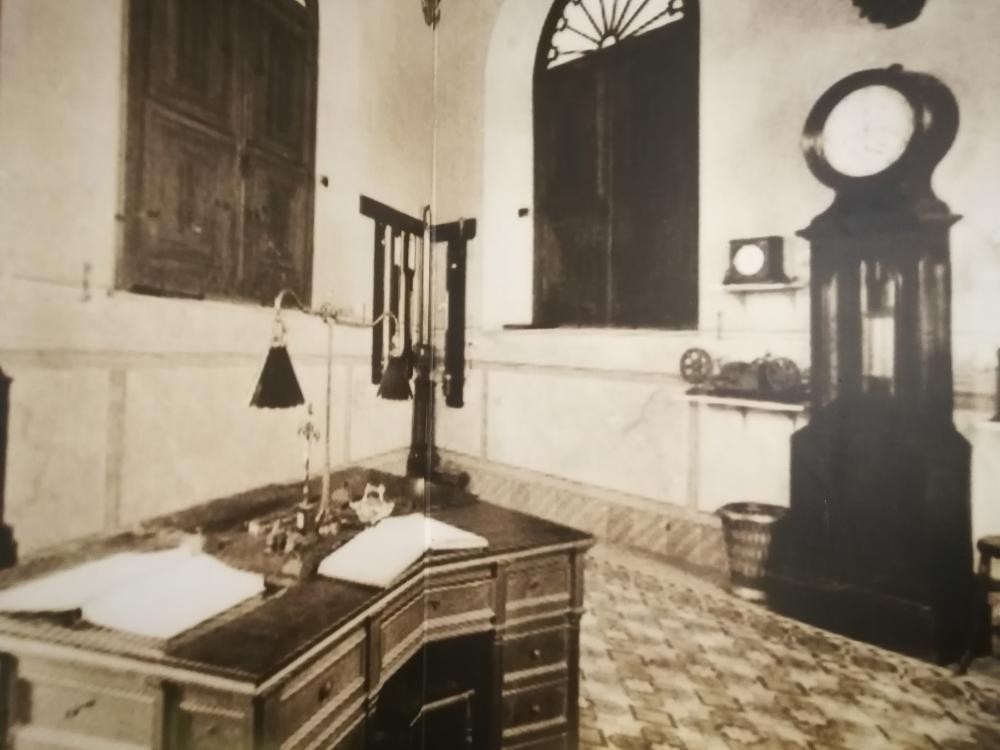
Fig. 15b. Museum of the Jesuit College Belén (Photo: Gudrun Wolfschmidt)
Today there is a nice meteorological and astronomical museum.
Astronomical relevance today - InfoTheme: Astronomy from the Renaissance to the mid-twentieth century
Entity: 188
Subentity: 1
Version: 3
Status: PUB
Date: 2021-05-07 00:47:40
Author(s): Gudrun Wolfschmidt
No longer used for astronomy nor meteorology.
References
Bibliography (books and published articles) - InfoTheme: Astronomy from the Renaissance to the mid-twentieth century
Entity: 188
Subentity: 1
Version: 4
Status: PUB
Date: 2021-05-07 00:48:32
Author(s): Gudrun Wolfschmidt
- Album conmemorativo del quincuagésimo aniversario de la fundación en la Habana del Colegio de Belén de la Compañía de Jesus. Havana: Imprenta Avisador Comercial 1904.
- Brenni, Paolo: Secchi’s Meteorographs Outside of Italy. In: Chinnici Illeana & G. Consolmagno (eds): Angelo Secchi and Nineteenth Century Science. Springer 2021, pp.~175--194.
- Cushman, Gregory T.: Viñes Martorell, Carlos Benito José. In: Encyclopedia.com
- History of the "Observatorio del Colegio de Belen, Habana" (1896--1977). In: Journal of Geophysical Research (September 1905).
- Darío García Porto, Miguel: The Belén Observatory Museum: to enter the fascinating universe of meteorology. (2017.06.14).
- Larson, Erik: Isaac’s Storm: A Man, a Time, and the Deadliest Hurricane in History. New York: Vintage 2000.
- Pyenson, Lewis: Civilizing Mission: Exact Sciences and French Overseas Expansion, 1830--1940. Baltimore, MD: Johns Hopkins University Press 1993.
- Ramos Guadalupe, Luis E. & Luis Enrique: Benito Viñes S.J.: Estudio biográfico. Havana: Editorial Academia 1996.
- Ramos Guadalupe, Luis E.: Father Benito Viñes: The 19th-Century Life and Contributions of a Cuban Hurricane Observer and Scientist. Translated by Oswaldo Garcia. American Meteorological Society 2015.
- Rigge, W.F.: Father Angelo Secchi. In: Popular Astronomy 26 (1918), p. 589 (1918PA.....26..589R).
- Udías, Agustín: "Jesuits’ Contribution to Meteorology." In: Bulletin of the American Meteorological Society 77 (October 1996), no. 10, 2307--2315.
- Udías, Agustín: Searching the Heavens and the Earth: The History of Jesuit Observatories. Springer Science & Business Media 2003. Dordrecht: Kluwer Academic 2013.
- Viñes Martorell, Carlos Benito José (b. Poboleda, Spain, 19 September 1837; d. Havana, Cuba, 23 July 1893), Meteorology, hurricane prediction, colonial science. (Dec 19, 2019).
- Viñes Martorell, Carlos Benito José: Investigaciones relativas a la circulación y traslación ciclónica en los huracanes de las Antillas. Havana: Imprenta del Avisador Comercial de Pulido y Diaz 1895.
Links to external sites - InfoTheme: Astronomy from the Renaissance to the mid-twentieth century
Entity: 188
Subentity: 1
Version: 3
Status: PUB
Date: 2021-05-07 00:49:07
Author(s): Gudrun Wolfschmidt
- Real Observatorio -- Colegio de Belén, Havana
- Meteorograph by Secchi, Fratelli Brassart et al., Roma, 1867
- Secchi’s Meteorograph in the Meteorological Observatory, St. Ignatius’ College, Cleveland, Ohio (1899)
PrintPrint contents of 'Description' tab
(opens in a new window) Theme
Astronomy from the Renaissance to the mid-twentieth century
Case Study Navigation
- InfoTheme: Astronomy from the Renaissance to the mid-twentieth century
Entity: 188
Subentity: 1
Version: 2
Status: PUB
Date: 2021-04-21 06:47:24
Author(s): Gudrun Wolfschmidt
Meteorological and astronomical Observatory --
Jesuit Convento e Iglesia de Nuestra Señora de Belén,
Calle Compostela, between Luz y Acosta, Havana Vieja, Cuba
Location - InfoTheme: Astronomy from the Renaissance to the mid-twentieth century
Entity: 188
Subentity: 1
Version: 2
Status: PUB
Date: 2021-04-21 06:47:59
Author(s): Gudrun Wolfschmidt
Latitude 23.132991 N, Longitude 82.353212 W. Elevation ...m above mean sea level.
IAU observatory code - InfoTheme: Astronomy from the Renaissance to the mid-twentieth century
Entity: 188
Subentity: 1
Version: 1
Status: PUB
Date: 2021-04-21 06:44:47
Author(s): Gudrun Wolfschmidt
-
Description of (scientific/cultural/natural) heritage - InfoTheme: Astronomy from the Renaissance to the mid-twentieth century
Entity: 188
Subentity: 1
Version: 3
Status: PUB
Date: 2021-05-07 00:43:13
Author(s): Gudrun Wolfschmidt

Fig. 1a. Jesuit Convento de Belén (1854--1925) (Wikipedia)

Fig. 1b. Observatorio de Belén (1857--1925) (Photo: Gudrun Wolfschmidt)
The Jesuit Convento de Belén, Convento e Iglesia de Nuestra Señora de Belén, was founded in 1854, and existed until 1925, when a new Jesuit College in Mariana near Havana was established.

Fig. 2a. Observatorio de Belén (1857--1925) (Photo: Gudrun Wolfschmidt)

Fig. 2b. Observatorio de Belén (1857--1925) (Photo: Gudrun Wolfschmidt)
Jesuits and Colonial Science

Fig. 3. Instrument Collection in Observatorio de Belén (Photo: Gudrun Wolfschmidt)
Astronomy, timekeeping, solar observations, meteorology, terrestrial magnetism, and seismology played an important role in imperial expansion during the age of empire. After the suppression of the Society of Jesus (1773--1814) and the regeneration, Jesuit observatories were revived or newly erected in the 19th century, e.g., outposts of scientific excellence were established in the tropics, besides Havana, Cuba, at Manila (Philippines, est. 1865), Zikawei (China, est. 1872), and Tananarive (now Antananarivo, Madagascar, est. 1889).

Fig. 4a. Meteorological ana astronomical Instruments, Observatorio de Belén (Photo: Gudrun Wolfschmidt)

Fig. 4b. Observatorio de Belén (Photo: Gudrun Wolfschmidt)
The Belén Magnetic, Meteorological and Astronomical Observatory was established in 1857.
The Real Observatorio (Royal Observatory), built in 1858 in Neo-Baroque style on top of the tower of the College. Benito Viñes (1837--1893) wanted "to provide a service to my brothers and contribute something to the advancement of science and the well-being of humanity" (quoted in Ramos & Enrique, 1996, p. 1).
Benito Viñes and the Hurricane Forecast

Fig. 5. Benito Viñes (1837--1893) (Photo: Gudrun Wolfschmidt)
Benito Viñes (1837--1893) started the investigation of the cyclonic circulation and the translatory movement of West Indian hurricanes. In 1882, Viñes journeyed across the Atlantic -- in cooperation with Stephen Perry, director of the Jesuit Observatory of Stonyhurst College in England -- to purchase instruments in Europe. Viñes "modeled these empirical laws, ultimately, on the geometric laws of planetary motion of Johannes Kepler". He prepared the presention of his influential work at the Columbian Exposition in Chicago (1893). Storm notebooks, correspondence, and other archival materials are at the Centro de Estudio de Historia de la Ciencia y la Tecnología and the Instituto de Meteorología, Ministerio de Ciencia, Tecnología y Medio Ambiente, both in Havana, Cuba.

Fig. 6. Ciclonoscopio por el Rev. P. B. Viñes, S.J., Collegio de Belén, Habana (1888) (Photo: Gudrun Wolfschmidt)
Benito Viñes did also astronomical work; he observed the Transit of Venus in December 1882, and he also reported magnetic observations from the tropics as part of the First International Polar Year (1882--1883).

Fig. 7a. Father Viñes with Secchi’s Meteorograph, Observatorio de Belén, 1880s (Photo: Gudrun Wolfschmidt)

Fig. 7b. Observatorio de Belén (Photo: Gudrun Wolfschmidt)
The highlight of the instrument collection of the Collegio de Belén is Secchi’s Meteorograph, useful to measure and to record multiple meteorological parameters at the same time: such as temperature, barometric pressure, wind speed, quantity of rain, etc. The Meteorograph was designed by Angelo Secchi (1878--1818), 1857 to 1867, later made by Fratelli Brassart, Rome. The first one was installed at the new Collegio Romano Observatory on the roof of St. Ignatius Church in Rome.
Original meteorographs can be found e.g. in the historical collections of INAF-Rome Astronomical Observatory at Monte Porzio Catone near Rome, in Zi-ka-wei, Chinam, and in St. Ignatius College, Cleveland, Ohio.
History - InfoTheme: Astronomy from the Renaissance to the mid-twentieth century
Entity: 188
Subentity: 1
Version: 5
Status: PUB
Date: 2021-09-14 13:29:43
Author(s): Gudrun Wolfschmidt
Instruments of the Collegio de Belén

Fig. 8a. Barometer, Gustavo Jensen y Ca., Habana, Observatorio de Belén (Photo: Gudrun Wolfschmidt)

Fig. 8b. Barometer, José M. Zarrabeitia, Habana, Observatorio de Belén (Photo: Gudrun Wolfschmidt)

Fig. 8c. Mercury Thermometers, Observatorio de Belén (Photo: Gudrun Wolfschmidt)
- Meteorological instruments:
- Secchi’s Meteorograph (1873), replica
- Mercury Thermometer, Harris Bros., USA (beginning of 20th c.)
- Max-Min-Thermometer, Taylor, USA (beginning of 20th c.)
- Barometer, Gustavo Jensen y Ca., Habana,
- Barometer, José M. Zarrabeitia, Habana
- Anemometer (a spinning wheel, which measures the wind speed)
- Psychrometer (measures humidity)
- Meteograph (temperature, humidity and air pressure)

Fig. 9a. Observatorio de Belén (Photo: Gudrun Wolfschmidt)

Fig. 9b. Anemometer, Observatorio de Belén (Photo: Gudrun Wolfschmidt)

Fig. 9c. Meteograph, Observatorio de Belén (Photo: Gudrun Wolfschmidt)
Camera obscura (end of 19th c.)
Astronomical instruments, cf. 17th century telescopes
Comet seeker
Pendulum Clock
Surveying instrument
Ciclonoscopio por el Rev. P. B. Viñes, S.J., Collegio de Belén, Habana (1888)

Fig. 10a. Camera obscura, Observatorio de Belén (Photo: Gudrun Wolfschmidt)

Fig. 10b. Early Telescopes, Observatorio de Belén (Photo: Gudrun Wolfschmidt)
Directors of the Collegio de Belén
- 1858 to 1860 -- Antonio Cabré (1829--1883), SJ
- 1860 to 1962 -- Francisco Butiñá, SJ
- 1862 to 1863 -- Felice Ciampi, SJ
- 1863 to 1864 -- Francisco Butiñá, SJ
- 1864 to 1867 -- José Reynal, SJ
- 1867 to 1868 -- Francisco Pons, SJ
- 1869 to 1869 -- José Maria Vélez, SJ
- 1870 to 1893 -- Carlos Benito José Viñes Martorell (1837--1893), SJ
- 1893 to 1925 -- Lorenzo Gangoiti, SJ
- 1943 to 1947 -- Simón Sarasola, SJ
- 1947 to 1961 -- José Rafael Goberna, SJ

Fig. 11a. Lorenzo Gangoiti, SJ, and Lorenzo Gangoiti, SJ (Photo: Gudrun Wolfschmidt)

Fig. 11b. Observatorio de Belén (Photo: Gudrun Wolfschmidt)
State of preservation - InfoTheme: Astronomy from the Renaissance to the mid-twentieth century
Entity: 188
Subentity: 1
Version: 3
Status: PUB
Date: 2021-05-07 00:45:17
Author(s): Gudrun Wolfschmidt

Fig. 12a. Observatorio de Belén (1857--1925) (Photo: Gudrun Wolfschmidt)

Fig. 12b. Observatorio de Belén (1857--1925) (Photo: Gudrun Wolfschmidt)
The Convento de Belén (1854) is preserved in good condition.

Fig. 13. New Jesuit College Belén (1925) (Photo: Gudrun Wolfschmidt)
The new Jesuit College Belén / Nuevo Colegio de Belén was designed by the Cuban architectural firm of Morales & Cia (Leonardo Morales y Pedroso) in 1925 in Marianao -- with an extensive neoclassical façade and four large courtyards.
In 1961 the government of Fidel Castro (a former graduate of Belén) confiscated all private and religious schools in Cuba. Castro expelled the Jesuits and declared the government of Cuba an atheist government.
Comparison with related/similar sites - InfoTheme: Astronomy from the Renaissance to the mid-twentieth century
Entity: 188
Subentity: 1
Version: 3
Status: PUB
Date: 2021-05-07 00:46:30
Author(s): Gudrun Wolfschmidt

Fig. 14. Observatorio de Belén (1857--1925) (Photo: Gudrun Wolfschmidt)
Cf. Warsaw Observatory
Threats or potential threats - InfoTheme: Astronomy from the Renaissance to the mid-twentieth century
Entity: 188
Subentity: 1
Version: 2
Status: PUB
Date: 2021-04-21 06:49:35
Author(s): Gudrun Wolfschmidt
no threats
Present use - InfoTheme: Astronomy from the Renaissance to the mid-twentieth century
Entity: 188
Subentity: 1
Version: 3
Status: PUB
Date: 2021-05-07 00:47:04
Author(s): Gudrun Wolfschmidt

Fig. 15a. Museum of the Jesuit College Belén (Photo: Gudrun Wolfschmidt)

Fig. 15b. Museum of the Jesuit College Belén (Photo: Gudrun Wolfschmidt)
Today there is a nice meteorological and astronomical museum.
Astronomical relevance today - InfoTheme: Astronomy from the Renaissance to the mid-twentieth century
Entity: 188
Subentity: 1
Version: 3
Status: PUB
Date: 2021-05-07 00:47:40
Author(s): Gudrun Wolfschmidt
No longer used for astronomy nor meteorology.
References
Bibliography (books and published articles) - InfoTheme: Astronomy from the Renaissance to the mid-twentieth century
Entity: 188
Subentity: 1
Version: 4
Status: PUB
Date: 2021-05-07 00:48:32
Author(s): Gudrun Wolfschmidt
- Album conmemorativo del quincuagésimo aniversario de la fundación en la Habana del Colegio de Belén de la Compañía de Jesus. Havana: Imprenta Avisador Comercial 1904.
- Brenni, Paolo: Secchi’s Meteorographs Outside of Italy. In: Chinnici Illeana & G. Consolmagno (eds): Angelo Secchi and Nineteenth Century Science. Springer 2021, pp.~175--194.
- Cushman, Gregory T.: Viñes Martorell, Carlos Benito José. In: Encyclopedia.com
- History of the "Observatorio del Colegio de Belen, Habana" (1896--1977). In: Journal of Geophysical Research (September 1905).
- Darío García Porto, Miguel: The Belén Observatory Museum: to enter the fascinating universe of meteorology. (2017.06.14).
- Larson, Erik: Isaac’s Storm: A Man, a Time, and the Deadliest Hurricane in History. New York: Vintage 2000.
- Pyenson, Lewis: Civilizing Mission: Exact Sciences and French Overseas Expansion, 1830--1940. Baltimore, MD: Johns Hopkins University Press 1993.
- Ramos Guadalupe, Luis E. & Luis Enrique: Benito Viñes S.J.: Estudio biográfico. Havana: Editorial Academia 1996.
- Ramos Guadalupe, Luis E.: Father Benito Viñes: The 19th-Century Life and Contributions of a Cuban Hurricane Observer and Scientist. Translated by Oswaldo Garcia. American Meteorological Society 2015.
- Rigge, W.F.: Father Angelo Secchi. In: Popular Astronomy 26 (1918), p. 589 (1918PA.....26..589R).
- Udías, Agustín: "Jesuits’ Contribution to Meteorology." In: Bulletin of the American Meteorological Society 77 (October 1996), no. 10, 2307--2315.
- Udías, Agustín: Searching the Heavens and the Earth: The History of Jesuit Observatories. Springer Science & Business Media 2003. Dordrecht: Kluwer Academic 2013.
- Viñes Martorell, Carlos Benito José (b. Poboleda, Spain, 19 September 1837; d. Havana, Cuba, 23 July 1893), Meteorology, hurricane prediction, colonial science. (Dec 19, 2019).
- Viñes Martorell, Carlos Benito José: Investigaciones relativas a la circulación y traslación ciclónica en los huracanes de las Antillas. Havana: Imprenta del Avisador Comercial de Pulido y Diaz 1895.
Links to external sites - InfoTheme: Astronomy from the Renaissance to the mid-twentieth century
Entity: 188
Subentity: 1
Version: 3
Status: PUB
Date: 2021-05-07 00:49:07
Author(s): Gudrun Wolfschmidt
- Real Observatorio -- Colegio de Belén, Havana
- Meteorograph by Secchi, Fratelli Brassart et al., Roma, 1867
- Secchi’s Meteorograph in the Meteorological Observatory, St. Ignatius’ College, Cleveland, Ohio (1899)
PrintPrint contents of 'Description' tab
(opens in a new window) Theme
Astronomy from the Renaissance to the mid-twentieth century
Case Study Navigation
- InfoTheme: Astronomy from the Renaissance to the mid-twentieth century
Entity: 188
Subentity: 1
Version: 2
Status: PUB
Date: 2021-04-21 06:47:59
Author(s): Gudrun Wolfschmidt
Latitude 23.132991 N, Longitude 82.353212 W. Elevation ...m above mean sea level.
IAU observatory code - InfoTheme: Astronomy from the Renaissance to the mid-twentieth century
Entity: 188
Subentity: 1
Version: 1
Status: PUB
Date: 2021-04-21 06:44:47
Author(s): Gudrun Wolfschmidt
-
Description of (scientific/cultural/natural) heritage - InfoTheme: Astronomy from the Renaissance to the mid-twentieth century
Entity: 188
Subentity: 1
Version: 3
Status: PUB
Date: 2021-05-07 00:43:13
Author(s): Gudrun Wolfschmidt

Fig. 1a. Jesuit Convento de Belén (1854--1925) (Wikipedia)

Fig. 1b. Observatorio de Belén (1857--1925) (Photo: Gudrun Wolfschmidt)
The Jesuit Convento de Belén, Convento e Iglesia de Nuestra Señora de Belén, was founded in 1854, and existed until 1925, when a new Jesuit College in Mariana near Havana was established.

Fig. 2a. Observatorio de Belén (1857--1925) (Photo: Gudrun Wolfschmidt)

Fig. 2b. Observatorio de Belén (1857--1925) (Photo: Gudrun Wolfschmidt)
Jesuits and Colonial Science

Fig. 3. Instrument Collection in Observatorio de Belén (Photo: Gudrun Wolfschmidt)
Astronomy, timekeeping, solar observations, meteorology, terrestrial magnetism, and seismology played an important role in imperial expansion during the age of empire. After the suppression of the Society of Jesus (1773--1814) and the regeneration, Jesuit observatories were revived or newly erected in the 19th century, e.g., outposts of scientific excellence were established in the tropics, besides Havana, Cuba, at Manila (Philippines, est. 1865), Zikawei (China, est. 1872), and Tananarive (now Antananarivo, Madagascar, est. 1889).

Fig. 4a. Meteorological ana astronomical Instruments, Observatorio de Belén (Photo: Gudrun Wolfschmidt)

Fig. 4b. Observatorio de Belén (Photo: Gudrun Wolfschmidt)
The Belén Magnetic, Meteorological and Astronomical Observatory was established in 1857.
The Real Observatorio (Royal Observatory), built in 1858 in Neo-Baroque style on top of the tower of the College. Benito Viñes (1837--1893) wanted "to provide a service to my brothers and contribute something to the advancement of science and the well-being of humanity" (quoted in Ramos & Enrique, 1996, p. 1).
Benito Viñes and the Hurricane Forecast

Fig. 5. Benito Viñes (1837--1893) (Photo: Gudrun Wolfschmidt)
Benito Viñes (1837--1893) started the investigation of the cyclonic circulation and the translatory movement of West Indian hurricanes. In 1882, Viñes journeyed across the Atlantic -- in cooperation with Stephen Perry, director of the Jesuit Observatory of Stonyhurst College in England -- to purchase instruments in Europe. Viñes "modeled these empirical laws, ultimately, on the geometric laws of planetary motion of Johannes Kepler". He prepared the presention of his influential work at the Columbian Exposition in Chicago (1893). Storm notebooks, correspondence, and other archival materials are at the Centro de Estudio de Historia de la Ciencia y la Tecnología and the Instituto de Meteorología, Ministerio de Ciencia, Tecnología y Medio Ambiente, both in Havana, Cuba.

Fig. 6. Ciclonoscopio por el Rev. P. B. Viñes, S.J., Collegio de Belén, Habana (1888) (Photo: Gudrun Wolfschmidt)
Benito Viñes did also astronomical work; he observed the Transit of Venus in December 1882, and he also reported magnetic observations from the tropics as part of the First International Polar Year (1882--1883).

Fig. 7a. Father Viñes with Secchi’s Meteorograph, Observatorio de Belén, 1880s (Photo: Gudrun Wolfschmidt)

Fig. 7b. Observatorio de Belén (Photo: Gudrun Wolfschmidt)
The highlight of the instrument collection of the Collegio de Belén is Secchi’s Meteorograph, useful to measure and to record multiple meteorological parameters at the same time: such as temperature, barometric pressure, wind speed, quantity of rain, etc. The Meteorograph was designed by Angelo Secchi (1878--1818), 1857 to 1867, later made by Fratelli Brassart, Rome. The first one was installed at the new Collegio Romano Observatory on the roof of St. Ignatius Church in Rome.
Original meteorographs can be found e.g. in the historical collections of INAF-Rome Astronomical Observatory at Monte Porzio Catone near Rome, in Zi-ka-wei, Chinam, and in St. Ignatius College, Cleveland, Ohio.
History - InfoTheme: Astronomy from the Renaissance to the mid-twentieth century
Entity: 188
Subentity: 1
Version: 5
Status: PUB
Date: 2021-09-14 13:29:43
Author(s): Gudrun Wolfschmidt
Instruments of the Collegio de Belén

Fig. 8a. Barometer, Gustavo Jensen y Ca., Habana, Observatorio de Belén (Photo: Gudrun Wolfschmidt)

Fig. 8b. Barometer, José M. Zarrabeitia, Habana, Observatorio de Belén (Photo: Gudrun Wolfschmidt)

Fig. 8c. Mercury Thermometers, Observatorio de Belén (Photo: Gudrun Wolfschmidt)
- Meteorological instruments:
- Secchi’s Meteorograph (1873), replica
- Mercury Thermometer, Harris Bros., USA (beginning of 20th c.)
- Max-Min-Thermometer, Taylor, USA (beginning of 20th c.)
- Barometer, Gustavo Jensen y Ca., Habana,
- Barometer, José M. Zarrabeitia, Habana
- Anemometer (a spinning wheel, which measures the wind speed)
- Psychrometer (measures humidity)
- Meteograph (temperature, humidity and air pressure)

Fig. 9a. Observatorio de Belén (Photo: Gudrun Wolfschmidt)

Fig. 9b. Anemometer, Observatorio de Belén (Photo: Gudrun Wolfschmidt)

Fig. 9c. Meteograph, Observatorio de Belén (Photo: Gudrun Wolfschmidt)
Camera obscura (end of 19th c.)
Astronomical instruments, cf. 17th century telescopes
Comet seeker
Pendulum Clock
Surveying instrument
Ciclonoscopio por el Rev. P. B. Viñes, S.J., Collegio de Belén, Habana (1888)

Fig. 10a. Camera obscura, Observatorio de Belén (Photo: Gudrun Wolfschmidt)

Fig. 10b. Early Telescopes, Observatorio de Belén (Photo: Gudrun Wolfschmidt)
Directors of the Collegio de Belén
- 1858 to 1860 -- Antonio Cabré (1829--1883), SJ
- 1860 to 1962 -- Francisco Butiñá, SJ
- 1862 to 1863 -- Felice Ciampi, SJ
- 1863 to 1864 -- Francisco Butiñá, SJ
- 1864 to 1867 -- José Reynal, SJ
- 1867 to 1868 -- Francisco Pons, SJ
- 1869 to 1869 -- José Maria Vélez, SJ
- 1870 to 1893 -- Carlos Benito José Viñes Martorell (1837--1893), SJ
- 1893 to 1925 -- Lorenzo Gangoiti, SJ
- 1943 to 1947 -- Simón Sarasola, SJ
- 1947 to 1961 -- José Rafael Goberna, SJ

Fig. 11a. Lorenzo Gangoiti, SJ, and Lorenzo Gangoiti, SJ (Photo: Gudrun Wolfschmidt)

Fig. 11b. Observatorio de Belén (Photo: Gudrun Wolfschmidt)
State of preservation - InfoTheme: Astronomy from the Renaissance to the mid-twentieth century
Entity: 188
Subentity: 1
Version: 3
Status: PUB
Date: 2021-05-07 00:45:17
Author(s): Gudrun Wolfschmidt

Fig. 12a. Observatorio de Belén (1857--1925) (Photo: Gudrun Wolfschmidt)

Fig. 12b. Observatorio de Belén (1857--1925) (Photo: Gudrun Wolfschmidt)
The Convento de Belén (1854) is preserved in good condition.

Fig. 13. New Jesuit College Belén (1925) (Photo: Gudrun Wolfschmidt)
The new Jesuit College Belén / Nuevo Colegio de Belén was designed by the Cuban architectural firm of Morales & Cia (Leonardo Morales y Pedroso) in 1925 in Marianao -- with an extensive neoclassical façade and four large courtyards.
In 1961 the government of Fidel Castro (a former graduate of Belén) confiscated all private and religious schools in Cuba. Castro expelled the Jesuits and declared the government of Cuba an atheist government.
Comparison with related/similar sites - InfoTheme: Astronomy from the Renaissance to the mid-twentieth century
Entity: 188
Subentity: 1
Version: 3
Status: PUB
Date: 2021-05-07 00:46:30
Author(s): Gudrun Wolfschmidt

Fig. 14. Observatorio de Belén (1857--1925) (Photo: Gudrun Wolfschmidt)
Cf. Warsaw Observatory
Threats or potential threats - InfoTheme: Astronomy from the Renaissance to the mid-twentieth century
Entity: 188
Subentity: 1
Version: 2
Status: PUB
Date: 2021-04-21 06:49:35
Author(s): Gudrun Wolfschmidt
no threats
Present use - InfoTheme: Astronomy from the Renaissance to the mid-twentieth century
Entity: 188
Subentity: 1
Version: 3
Status: PUB
Date: 2021-05-07 00:47:04
Author(s): Gudrun Wolfschmidt

Fig. 15a. Museum of the Jesuit College Belén (Photo: Gudrun Wolfschmidt)

Fig. 15b. Museum of the Jesuit College Belén (Photo: Gudrun Wolfschmidt)
Today there is a nice meteorological and astronomical museum.
Astronomical relevance today - InfoTheme: Astronomy from the Renaissance to the mid-twentieth century
Entity: 188
Subentity: 1
Version: 3
Status: PUB
Date: 2021-05-07 00:47:40
Author(s): Gudrun Wolfschmidt
No longer used for astronomy nor meteorology.
References
Bibliography (books and published articles) - InfoTheme: Astronomy from the Renaissance to the mid-twentieth century
Entity: 188
Subentity: 1
Version: 4
Status: PUB
Date: 2021-05-07 00:48:32
Author(s): Gudrun Wolfschmidt
- Album conmemorativo del quincuagésimo aniversario de la fundación en la Habana del Colegio de Belén de la Compañía de Jesus. Havana: Imprenta Avisador Comercial 1904.
- Brenni, Paolo: Secchi’s Meteorographs Outside of Italy. In: Chinnici Illeana & G. Consolmagno (eds): Angelo Secchi and Nineteenth Century Science. Springer 2021, pp.~175--194.
- Cushman, Gregory T.: Viñes Martorell, Carlos Benito José. In: Encyclopedia.com
- History of the "Observatorio del Colegio de Belen, Habana" (1896--1977). In: Journal of Geophysical Research (September 1905).
- Darío García Porto, Miguel: The Belén Observatory Museum: to enter the fascinating universe of meteorology. (2017.06.14).
- Larson, Erik: Isaac’s Storm: A Man, a Time, and the Deadliest Hurricane in History. New York: Vintage 2000.
- Pyenson, Lewis: Civilizing Mission: Exact Sciences and French Overseas Expansion, 1830--1940. Baltimore, MD: Johns Hopkins University Press 1993.
- Ramos Guadalupe, Luis E. & Luis Enrique: Benito Viñes S.J.: Estudio biográfico. Havana: Editorial Academia 1996.
- Ramos Guadalupe, Luis E.: Father Benito Viñes: The 19th-Century Life and Contributions of a Cuban Hurricane Observer and Scientist. Translated by Oswaldo Garcia. American Meteorological Society 2015.
- Rigge, W.F.: Father Angelo Secchi. In: Popular Astronomy 26 (1918), p. 589 (1918PA.....26..589R).
- Udías, Agustín: "Jesuits’ Contribution to Meteorology." In: Bulletin of the American Meteorological Society 77 (October 1996), no. 10, 2307--2315.
- Udías, Agustín: Searching the Heavens and the Earth: The History of Jesuit Observatories. Springer Science & Business Media 2003. Dordrecht: Kluwer Academic 2013.
- Viñes Martorell, Carlos Benito José (b. Poboleda, Spain, 19 September 1837; d. Havana, Cuba, 23 July 1893), Meteorology, hurricane prediction, colonial science. (Dec 19, 2019).
- Viñes Martorell, Carlos Benito José: Investigaciones relativas a la circulación y traslación ciclónica en los huracanes de las Antillas. Havana: Imprenta del Avisador Comercial de Pulido y Diaz 1895.
Links to external sites - InfoTheme: Astronomy from the Renaissance to the mid-twentieth century
Entity: 188
Subentity: 1
Version: 3
Status: PUB
Date: 2021-05-07 00:49:07
Author(s): Gudrun Wolfschmidt
- Real Observatorio -- Colegio de Belén, Havana
- Meteorograph by Secchi, Fratelli Brassart et al., Roma, 1867
- Secchi’s Meteorograph in the Meteorological Observatory, St. Ignatius’ College, Cleveland, Ohio (1899)
PrintPrint contents of 'Description' tab
(opens in a new window) Theme
Astronomy from the Renaissance to the mid-twentieth century
Case Study Navigation
- InfoTheme: Astronomy from the Renaissance to the mid-twentieth century
Entity: 188
Subentity: 1
Version: 1
Status: PUB
Date: 2021-04-21 06:44:47
Author(s): Gudrun Wolfschmidt
-
Description of (scientific/cultural/natural) heritage - InfoTheme: Astronomy from the Renaissance to the mid-twentieth century
Entity: 188
Subentity: 1
Version: 3
Status: PUB
Date: 2021-05-07 00:43:13
Author(s): Gudrun Wolfschmidt

Fig. 1a. Jesuit Convento de Belén (1854--1925) (Wikipedia)

Fig. 1b. Observatorio de Belén (1857--1925) (Photo: Gudrun Wolfschmidt)
The Jesuit Convento de Belén, Convento e Iglesia de Nuestra Señora de Belén, was founded in 1854, and existed until 1925, when a new Jesuit College in Mariana near Havana was established.

Fig. 2a. Observatorio de Belén (1857--1925) (Photo: Gudrun Wolfschmidt)

Fig. 2b. Observatorio de Belén (1857--1925) (Photo: Gudrun Wolfschmidt)
Jesuits and Colonial Science

Fig. 3. Instrument Collection in Observatorio de Belén (Photo: Gudrun Wolfschmidt)
Astronomy, timekeeping, solar observations, meteorology, terrestrial magnetism, and seismology played an important role in imperial expansion during the age of empire. After the suppression of the Society of Jesus (1773--1814) and the regeneration, Jesuit observatories were revived or newly erected in the 19th century, e.g., outposts of scientific excellence were established in the tropics, besides Havana, Cuba, at Manila (Philippines, est. 1865), Zikawei (China, est. 1872), and Tananarive (now Antananarivo, Madagascar, est. 1889).

Fig. 4a. Meteorological ana astronomical Instruments, Observatorio de Belén (Photo: Gudrun Wolfschmidt)

Fig. 4b. Observatorio de Belén (Photo: Gudrun Wolfschmidt)
The Belén Magnetic, Meteorological and Astronomical Observatory was established in 1857.
The Real Observatorio (Royal Observatory), built in 1858 in Neo-Baroque style on top of the tower of the College. Benito Viñes (1837--1893) wanted "to provide a service to my brothers and contribute something to the advancement of science and the well-being of humanity" (quoted in Ramos & Enrique, 1996, p. 1).
Benito Viñes and the Hurricane Forecast

Fig. 5. Benito Viñes (1837--1893) (Photo: Gudrun Wolfschmidt)
Benito Viñes (1837--1893) started the investigation of the cyclonic circulation and the translatory movement of West Indian hurricanes. In 1882, Viñes journeyed across the Atlantic -- in cooperation with Stephen Perry, director of the Jesuit Observatory of Stonyhurst College in England -- to purchase instruments in Europe. Viñes "modeled these empirical laws, ultimately, on the geometric laws of planetary motion of Johannes Kepler". He prepared the presention of his influential work at the Columbian Exposition in Chicago (1893). Storm notebooks, correspondence, and other archival materials are at the Centro de Estudio de Historia de la Ciencia y la Tecnología and the Instituto de Meteorología, Ministerio de Ciencia, Tecnología y Medio Ambiente, both in Havana, Cuba.

Fig. 6. Ciclonoscopio por el Rev. P. B. Viñes, S.J., Collegio de Belén, Habana (1888) (Photo: Gudrun Wolfschmidt)
Benito Viñes did also astronomical work; he observed the Transit of Venus in December 1882, and he also reported magnetic observations from the tropics as part of the First International Polar Year (1882--1883).

Fig. 7a. Father Viñes with Secchi’s Meteorograph, Observatorio de Belén, 1880s (Photo: Gudrun Wolfschmidt)

Fig. 7b. Observatorio de Belén (Photo: Gudrun Wolfschmidt)
The highlight of the instrument collection of the Collegio de Belén is Secchi’s Meteorograph, useful to measure and to record multiple meteorological parameters at the same time: such as temperature, barometric pressure, wind speed, quantity of rain, etc. The Meteorograph was designed by Angelo Secchi (1878--1818), 1857 to 1867, later made by Fratelli Brassart, Rome. The first one was installed at the new Collegio Romano Observatory on the roof of St. Ignatius Church in Rome.
Original meteorographs can be found e.g. in the historical collections of INAF-Rome Astronomical Observatory at Monte Porzio Catone near Rome, in Zi-ka-wei, Chinam, and in St. Ignatius College, Cleveland, Ohio.
History - InfoTheme: Astronomy from the Renaissance to the mid-twentieth century
Entity: 188
Subentity: 1
Version: 5
Status: PUB
Date: 2021-09-14 13:29:43
Author(s): Gudrun Wolfschmidt
Instruments of the Collegio de Belén

Fig. 8a. Barometer, Gustavo Jensen y Ca., Habana, Observatorio de Belén (Photo: Gudrun Wolfschmidt)

Fig. 8b. Barometer, José M. Zarrabeitia, Habana, Observatorio de Belén (Photo: Gudrun Wolfschmidt)

Fig. 8c. Mercury Thermometers, Observatorio de Belén (Photo: Gudrun Wolfschmidt)
- Meteorological instruments:
- Secchi’s Meteorograph (1873), replica
- Mercury Thermometer, Harris Bros., USA (beginning of 20th c.)
- Max-Min-Thermometer, Taylor, USA (beginning of 20th c.)
- Barometer, Gustavo Jensen y Ca., Habana,
- Barometer, José M. Zarrabeitia, Habana
- Anemometer (a spinning wheel, which measures the wind speed)
- Psychrometer (measures humidity)
- Meteograph (temperature, humidity and air pressure)

Fig. 9a. Observatorio de Belén (Photo: Gudrun Wolfschmidt)

Fig. 9b. Anemometer, Observatorio de Belén (Photo: Gudrun Wolfschmidt)

Fig. 9c. Meteograph, Observatorio de Belén (Photo: Gudrun Wolfschmidt)
Camera obscura (end of 19th c.)
Astronomical instruments, cf. 17th century telescopes
Comet seeker
Pendulum Clock
Surveying instrument
Ciclonoscopio por el Rev. P. B. Viñes, S.J., Collegio de Belén, Habana (1888)

Fig. 10a. Camera obscura, Observatorio de Belén (Photo: Gudrun Wolfschmidt)

Fig. 10b. Early Telescopes, Observatorio de Belén (Photo: Gudrun Wolfschmidt)
Directors of the Collegio de Belén
- 1858 to 1860 -- Antonio Cabré (1829--1883), SJ
- 1860 to 1962 -- Francisco Butiñá, SJ
- 1862 to 1863 -- Felice Ciampi, SJ
- 1863 to 1864 -- Francisco Butiñá, SJ
- 1864 to 1867 -- José Reynal, SJ
- 1867 to 1868 -- Francisco Pons, SJ
- 1869 to 1869 -- José Maria Vélez, SJ
- 1870 to 1893 -- Carlos Benito José Viñes Martorell (1837--1893), SJ
- 1893 to 1925 -- Lorenzo Gangoiti, SJ
- 1943 to 1947 -- Simón Sarasola, SJ
- 1947 to 1961 -- José Rafael Goberna, SJ

Fig. 11a. Lorenzo Gangoiti, SJ, and Lorenzo Gangoiti, SJ (Photo: Gudrun Wolfschmidt)

Fig. 11b. Observatorio de Belén (Photo: Gudrun Wolfschmidt)
State of preservation - InfoTheme: Astronomy from the Renaissance to the mid-twentieth century
Entity: 188
Subentity: 1
Version: 3
Status: PUB
Date: 2021-05-07 00:45:17
Author(s): Gudrun Wolfschmidt

Fig. 12a. Observatorio de Belén (1857--1925) (Photo: Gudrun Wolfschmidt)

Fig. 12b. Observatorio de Belén (1857--1925) (Photo: Gudrun Wolfschmidt)
The Convento de Belén (1854) is preserved in good condition.

Fig. 13. New Jesuit College Belén (1925) (Photo: Gudrun Wolfschmidt)
The new Jesuit College Belén / Nuevo Colegio de Belén was designed by the Cuban architectural firm of Morales & Cia (Leonardo Morales y Pedroso) in 1925 in Marianao -- with an extensive neoclassical façade and four large courtyards.
In 1961 the government of Fidel Castro (a former graduate of Belén) confiscated all private and religious schools in Cuba. Castro expelled the Jesuits and declared the government of Cuba an atheist government.
Comparison with related/similar sites - InfoTheme: Astronomy from the Renaissance to the mid-twentieth century
Entity: 188
Subentity: 1
Version: 3
Status: PUB
Date: 2021-05-07 00:46:30
Author(s): Gudrun Wolfschmidt

Fig. 14. Observatorio de Belén (1857--1925) (Photo: Gudrun Wolfschmidt)
Cf. Warsaw Observatory
Threats or potential threats - InfoTheme: Astronomy from the Renaissance to the mid-twentieth century
Entity: 188
Subentity: 1
Version: 2
Status: PUB
Date: 2021-04-21 06:49:35
Author(s): Gudrun Wolfschmidt
no threats
Present use - InfoTheme: Astronomy from the Renaissance to the mid-twentieth century
Entity: 188
Subentity: 1
Version: 3
Status: PUB
Date: 2021-05-07 00:47:04
Author(s): Gudrun Wolfschmidt

Fig. 15a. Museum of the Jesuit College Belén (Photo: Gudrun Wolfschmidt)

Fig. 15b. Museum of the Jesuit College Belén (Photo: Gudrun Wolfschmidt)
Today there is a nice meteorological and astronomical museum.
Astronomical relevance today - InfoTheme: Astronomy from the Renaissance to the mid-twentieth century
Entity: 188
Subentity: 1
Version: 3
Status: PUB
Date: 2021-05-07 00:47:40
Author(s): Gudrun Wolfschmidt
No longer used for astronomy nor meteorology.
References
Bibliography (books and published articles) - InfoTheme: Astronomy from the Renaissance to the mid-twentieth century
Entity: 188
Subentity: 1
Version: 4
Status: PUB
Date: 2021-05-07 00:48:32
Author(s): Gudrun Wolfschmidt
- Album conmemorativo del quincuagésimo aniversario de la fundación en la Habana del Colegio de Belén de la Compañía de Jesus. Havana: Imprenta Avisador Comercial 1904.
- Brenni, Paolo: Secchi’s Meteorographs Outside of Italy. In: Chinnici Illeana & G. Consolmagno (eds): Angelo Secchi and Nineteenth Century Science. Springer 2021, pp.~175--194.
- Cushman, Gregory T.: Viñes Martorell, Carlos Benito José. In: Encyclopedia.com
- History of the "Observatorio del Colegio de Belen, Habana" (1896--1977). In: Journal of Geophysical Research (September 1905).
- Darío García Porto, Miguel: The Belén Observatory Museum: to enter the fascinating universe of meteorology. (2017.06.14).
- Larson, Erik: Isaac’s Storm: A Man, a Time, and the Deadliest Hurricane in History. New York: Vintage 2000.
- Pyenson, Lewis: Civilizing Mission: Exact Sciences and French Overseas Expansion, 1830--1940. Baltimore, MD: Johns Hopkins University Press 1993.
- Ramos Guadalupe, Luis E. & Luis Enrique: Benito Viñes S.J.: Estudio biográfico. Havana: Editorial Academia 1996.
- Ramos Guadalupe, Luis E.: Father Benito Viñes: The 19th-Century Life and Contributions of a Cuban Hurricane Observer and Scientist. Translated by Oswaldo Garcia. American Meteorological Society 2015.
- Rigge, W.F.: Father Angelo Secchi. In: Popular Astronomy 26 (1918), p. 589 (1918PA.....26..589R).
- Udías, Agustín: "Jesuits’ Contribution to Meteorology." In: Bulletin of the American Meteorological Society 77 (October 1996), no. 10, 2307--2315.
- Udías, Agustín: Searching the Heavens and the Earth: The History of Jesuit Observatories. Springer Science & Business Media 2003. Dordrecht: Kluwer Academic 2013.
- Viñes Martorell, Carlos Benito José (b. Poboleda, Spain, 19 September 1837; d. Havana, Cuba, 23 July 1893), Meteorology, hurricane prediction, colonial science. (Dec 19, 2019).
- Viñes Martorell, Carlos Benito José: Investigaciones relativas a la circulación y traslación ciclónica en los huracanes de las Antillas. Havana: Imprenta del Avisador Comercial de Pulido y Diaz 1895.
Links to external sites - InfoTheme: Astronomy from the Renaissance to the mid-twentieth century
Entity: 188
Subentity: 1
Version: 3
Status: PUB
Date: 2021-05-07 00:49:07
Author(s): Gudrun Wolfschmidt
- Real Observatorio -- Colegio de Belén, Havana
- Meteorograph by Secchi, Fratelli Brassart et al., Roma, 1867
- Secchi’s Meteorograph in the Meteorological Observatory, St. Ignatius’ College, Cleveland, Ohio (1899)
PrintPrint contents of 'Description' tab
(opens in a new window) Theme
Astronomy from the Renaissance to the mid-twentieth century
Case Study Navigation
- InfoTheme: Astronomy from the Renaissance to the mid-twentieth century
Entity: 188
Subentity: 1
Version: 3
Status: PUB
Date: 2021-05-07 00:43:13
Author(s): Gudrun Wolfschmidt

Fig. 1a. Jesuit Convento de Belén (1854--1925) (Wikipedia)

Fig. 1b. Observatorio de Belén (1857--1925) (Photo: Gudrun Wolfschmidt)
The Jesuit Convento de Belén, Convento e Iglesia de Nuestra Señora de Belén, was founded in 1854, and existed until 1925, when a new Jesuit College in Mariana near Havana was established.

Fig. 2a. Observatorio de Belén (1857--1925) (Photo: Gudrun Wolfschmidt)

Fig. 2b. Observatorio de Belén (1857--1925) (Photo: Gudrun Wolfschmidt)
Jesuits and Colonial Science

Fig. 3. Instrument Collection in Observatorio de Belén (Photo: Gudrun Wolfschmidt)
Astronomy, timekeeping, solar observations, meteorology, terrestrial magnetism, and seismology played an important role in imperial expansion during the age of empire. After the suppression of the Society of Jesus (1773--1814) and the regeneration, Jesuit observatories were revived or newly erected in the 19th century, e.g., outposts of scientific excellence were established in the tropics, besides Havana, Cuba, at Manila (Philippines, est. 1865), Zikawei (China, est. 1872), and Tananarive (now Antananarivo, Madagascar, est. 1889).

Fig. 4a. Meteorological ana astronomical Instruments, Observatorio de Belén (Photo: Gudrun Wolfschmidt)

Fig. 4b. Observatorio de Belén (Photo: Gudrun Wolfschmidt)
The Belén Magnetic, Meteorological and Astronomical Observatory was established in 1857.
The Real Observatorio (Royal Observatory), built in 1858 in Neo-Baroque style on top of the tower of the College. Benito Viñes (1837--1893) wanted "to provide a service to my brothers and contribute something to the advancement of science and the well-being of humanity" (quoted in Ramos & Enrique, 1996, p. 1).
Benito Viñes and the Hurricane Forecast

Fig. 5. Benito Viñes (1837--1893) (Photo: Gudrun Wolfschmidt)
Benito Viñes (1837--1893) started the investigation of the cyclonic circulation and the translatory movement of West Indian hurricanes. In 1882, Viñes journeyed across the Atlantic -- in cooperation with Stephen Perry, director of the Jesuit Observatory of Stonyhurst College in England -- to purchase instruments in Europe. Viñes "modeled these empirical laws, ultimately, on the geometric laws of planetary motion of Johannes Kepler". He prepared the presention of his influential work at the Columbian Exposition in Chicago (1893). Storm notebooks, correspondence, and other archival materials are at the Centro de Estudio de Historia de la Ciencia y la Tecnología and the Instituto de Meteorología, Ministerio de Ciencia, Tecnología y Medio Ambiente, both in Havana, Cuba.

Fig. 6. Ciclonoscopio por el Rev. P. B. Viñes, S.J., Collegio de Belén, Habana (1888) (Photo: Gudrun Wolfschmidt)
Benito Viñes did also astronomical work; he observed the Transit of Venus in December 1882, and he also reported magnetic observations from the tropics as part of the First International Polar Year (1882--1883).

Fig. 7a. Father Viñes with Secchi’s Meteorograph, Observatorio de Belén, 1880s (Photo: Gudrun Wolfschmidt)

Fig. 7b. Observatorio de Belén (Photo: Gudrun Wolfschmidt)
The highlight of the instrument collection of the Collegio de Belén is Secchi’s Meteorograph, useful to measure and to record multiple meteorological parameters at the same time: such as temperature, barometric pressure, wind speed, quantity of rain, etc. The Meteorograph was designed by Angelo Secchi (1878--1818), 1857 to 1867, later made by Fratelli Brassart, Rome. The first one was installed at the new Collegio Romano Observatory on the roof of St. Ignatius Church in Rome.
Original meteorographs can be found e.g. in the historical collections of INAF-Rome Astronomical Observatory at Monte Porzio Catone near Rome, in Zi-ka-wei, Chinam, and in St. Ignatius College, Cleveland, Ohio.
History - InfoTheme: Astronomy from the Renaissance to the mid-twentieth century
Entity: 188
Subentity: 1
Version: 5
Status: PUB
Date: 2021-09-14 13:29:43
Author(s): Gudrun Wolfschmidt
Instruments of the Collegio de Belén

Fig. 8a. Barometer, Gustavo Jensen y Ca., Habana, Observatorio de Belén (Photo: Gudrun Wolfschmidt)

Fig. 8b. Barometer, José M. Zarrabeitia, Habana, Observatorio de Belén (Photo: Gudrun Wolfschmidt)

Fig. 8c. Mercury Thermometers, Observatorio de Belén (Photo: Gudrun Wolfschmidt)
- Meteorological instruments:
- Secchi’s Meteorograph (1873), replica
- Mercury Thermometer, Harris Bros., USA (beginning of 20th c.)
- Max-Min-Thermometer, Taylor, USA (beginning of 20th c.)
- Barometer, Gustavo Jensen y Ca., Habana,
- Barometer, José M. Zarrabeitia, Habana
- Anemometer (a spinning wheel, which measures the wind speed)
- Psychrometer (measures humidity)
- Meteograph (temperature, humidity and air pressure)

Fig. 9a. Observatorio de Belén (Photo: Gudrun Wolfschmidt)

Fig. 9b. Anemometer, Observatorio de Belén (Photo: Gudrun Wolfschmidt)

Fig. 9c. Meteograph, Observatorio de Belén (Photo: Gudrun Wolfschmidt)
Camera obscura (end of 19th c.)
Astronomical instruments, cf. 17th century telescopes
Comet seeker
Pendulum Clock
Surveying instrument
Ciclonoscopio por el Rev. P. B. Viñes, S.J., Collegio de Belén, Habana (1888)

Fig. 10a. Camera obscura, Observatorio de Belén (Photo: Gudrun Wolfschmidt)

Fig. 10b. Early Telescopes, Observatorio de Belén (Photo: Gudrun Wolfschmidt)
Directors of the Collegio de Belén
- 1858 to 1860 -- Antonio Cabré (1829--1883), SJ
- 1860 to 1962 -- Francisco Butiñá, SJ
- 1862 to 1863 -- Felice Ciampi, SJ
- 1863 to 1864 -- Francisco Butiñá, SJ
- 1864 to 1867 -- José Reynal, SJ
- 1867 to 1868 -- Francisco Pons, SJ
- 1869 to 1869 -- José Maria Vélez, SJ
- 1870 to 1893 -- Carlos Benito José Viñes Martorell (1837--1893), SJ
- 1893 to 1925 -- Lorenzo Gangoiti, SJ
- 1943 to 1947 -- Simón Sarasola, SJ
- 1947 to 1961 -- José Rafael Goberna, SJ

Fig. 11a. Lorenzo Gangoiti, SJ, and Lorenzo Gangoiti, SJ (Photo: Gudrun Wolfschmidt)

Fig. 11b. Observatorio de Belén (Photo: Gudrun Wolfschmidt)
State of preservation - InfoTheme: Astronomy from the Renaissance to the mid-twentieth century
Entity: 188
Subentity: 1
Version: 3
Status: PUB
Date: 2021-05-07 00:45:17
Author(s): Gudrun Wolfschmidt

Fig. 12a. Observatorio de Belén (1857--1925) (Photo: Gudrun Wolfschmidt)

Fig. 12b. Observatorio de Belén (1857--1925) (Photo: Gudrun Wolfschmidt)
The Convento de Belén (1854) is preserved in good condition.

Fig. 13. New Jesuit College Belén (1925) (Photo: Gudrun Wolfschmidt)
The new Jesuit College Belén / Nuevo Colegio de Belén was designed by the Cuban architectural firm of Morales & Cia (Leonardo Morales y Pedroso) in 1925 in Marianao -- with an extensive neoclassical façade and four large courtyards.
In 1961 the government of Fidel Castro (a former graduate of Belén) confiscated all private and religious schools in Cuba. Castro expelled the Jesuits and declared the government of Cuba an atheist government.
Comparison with related/similar sites - InfoTheme: Astronomy from the Renaissance to the mid-twentieth century
Entity: 188
Subentity: 1
Version: 3
Status: PUB
Date: 2021-05-07 00:46:30
Author(s): Gudrun Wolfschmidt

Fig. 14. Observatorio de Belén (1857--1925) (Photo: Gudrun Wolfschmidt)
Cf. Warsaw Observatory
Threats or potential threats - InfoTheme: Astronomy from the Renaissance to the mid-twentieth century
Entity: 188
Subentity: 1
Version: 2
Status: PUB
Date: 2021-04-21 06:49:35
Author(s): Gudrun Wolfschmidt
no threats
Present use - InfoTheme: Astronomy from the Renaissance to the mid-twentieth century
Entity: 188
Subentity: 1
Version: 3
Status: PUB
Date: 2021-05-07 00:47:04
Author(s): Gudrun Wolfschmidt

Fig. 15a. Museum of the Jesuit College Belén (Photo: Gudrun Wolfschmidt)

Fig. 15b. Museum of the Jesuit College Belén (Photo: Gudrun Wolfschmidt)
Today there is a nice meteorological and astronomical museum.
Astronomical relevance today - InfoTheme: Astronomy from the Renaissance to the mid-twentieth century
Entity: 188
Subentity: 1
Version: 3
Status: PUB
Date: 2021-05-07 00:47:40
Author(s): Gudrun Wolfschmidt
No longer used for astronomy nor meteorology.
References
Bibliography (books and published articles) - InfoTheme: Astronomy from the Renaissance to the mid-twentieth century
Entity: 188
Subentity: 1
Version: 4
Status: PUB
Date: 2021-05-07 00:48:32
Author(s): Gudrun Wolfschmidt
- Album conmemorativo del quincuagésimo aniversario de la fundación en la Habana del Colegio de Belén de la Compañía de Jesus. Havana: Imprenta Avisador Comercial 1904.
- Brenni, Paolo: Secchi’s Meteorographs Outside of Italy. In: Chinnici Illeana & G. Consolmagno (eds): Angelo Secchi and Nineteenth Century Science. Springer 2021, pp.~175--194.
- Cushman, Gregory T.: Viñes Martorell, Carlos Benito José. In: Encyclopedia.com
- History of the "Observatorio del Colegio de Belen, Habana" (1896--1977). In: Journal of Geophysical Research (September 1905).
- Darío García Porto, Miguel: The Belén Observatory Museum: to enter the fascinating universe of meteorology. (2017.06.14).
- Larson, Erik: Isaac’s Storm: A Man, a Time, and the Deadliest Hurricane in History. New York: Vintage 2000.
- Pyenson, Lewis: Civilizing Mission: Exact Sciences and French Overseas Expansion, 1830--1940. Baltimore, MD: Johns Hopkins University Press 1993.
- Ramos Guadalupe, Luis E. & Luis Enrique: Benito Viñes S.J.: Estudio biográfico. Havana: Editorial Academia 1996.
- Ramos Guadalupe, Luis E.: Father Benito Viñes: The 19th-Century Life and Contributions of a Cuban Hurricane Observer and Scientist. Translated by Oswaldo Garcia. American Meteorological Society 2015.
- Rigge, W.F.: Father Angelo Secchi. In: Popular Astronomy 26 (1918), p. 589 (1918PA.....26..589R).
- Udías, Agustín: "Jesuits’ Contribution to Meteorology." In: Bulletin of the American Meteorological Society 77 (October 1996), no. 10, 2307--2315.
- Udías, Agustín: Searching the Heavens and the Earth: The History of Jesuit Observatories. Springer Science & Business Media 2003. Dordrecht: Kluwer Academic 2013.
- Viñes Martorell, Carlos Benito José (b. Poboleda, Spain, 19 September 1837; d. Havana, Cuba, 23 July 1893), Meteorology, hurricane prediction, colonial science. (Dec 19, 2019).
- Viñes Martorell, Carlos Benito José: Investigaciones relativas a la circulación y traslación ciclónica en los huracanes de las Antillas. Havana: Imprenta del Avisador Comercial de Pulido y Diaz 1895.
Links to external sites - InfoTheme: Astronomy from the Renaissance to the mid-twentieth century
Entity: 188
Subentity: 1
Version: 3
Status: PUB
Date: 2021-05-07 00:49:07
Author(s): Gudrun Wolfschmidt
- Real Observatorio -- Colegio de Belén, Havana
- Meteorograph by Secchi, Fratelli Brassart et al., Roma, 1867
- Secchi’s Meteorograph in the Meteorological Observatory, St. Ignatius’ College, Cleveland, Ohio (1899)
PrintPrint contents of 'Description' tab
(opens in a new window) Theme
Astronomy from the Renaissance to the mid-twentieth century
Case Study Navigation
- InfoTheme: Astronomy from the Renaissance to the mid-twentieth century
Entity: 188
Subentity: 1
Version: 5
Status: PUB
Date: 2021-09-14 13:29:43
Author(s): Gudrun Wolfschmidt
Instruments of the Collegio de Belén

Fig. 8a. Barometer, Gustavo Jensen y Ca., Habana, Observatorio de Belén (Photo: Gudrun Wolfschmidt)

Fig. 8b. Barometer, José M. Zarrabeitia, Habana, Observatorio de Belén (Photo: Gudrun Wolfschmidt)

Fig. 8c. Mercury Thermometers, Observatorio de Belén (Photo: Gudrun Wolfschmidt)
- Meteorological instruments:
- Secchi’s Meteorograph (1873), replica
- Mercury Thermometer, Harris Bros., USA (beginning of 20th c.)
- Max-Min-Thermometer, Taylor, USA (beginning of 20th c.)
- Barometer, Gustavo Jensen y Ca., Habana,
- Barometer, José M. Zarrabeitia, Habana
- Anemometer (a spinning wheel, which measures the wind speed)
- Psychrometer (measures humidity)
- Meteograph (temperature, humidity and air pressure)

Fig. 9a. Observatorio de Belén (Photo: Gudrun Wolfschmidt)

Fig. 9b. Anemometer, Observatorio de Belén (Photo: Gudrun Wolfschmidt)

Fig. 9c. Meteograph, Observatorio de Belén (Photo: Gudrun Wolfschmidt)

Fig. 10a. Camera obscura, Observatorio de Belén (Photo: Gudrun Wolfschmidt)

Fig. 10b. Early Telescopes, Observatorio de Belén (Photo: Gudrun Wolfschmidt)
Directors of the Collegio de Belén
- 1858 to 1860 -- Antonio Cabré (1829--1883), SJ
- 1860 to 1962 -- Francisco Butiñá, SJ
- 1862 to 1863 -- Felice Ciampi, SJ
- 1863 to 1864 -- Francisco Butiñá, SJ
- 1864 to 1867 -- José Reynal, SJ
- 1867 to 1868 -- Francisco Pons, SJ
- 1869 to 1869 -- José Maria Vélez, SJ
- 1870 to 1893 -- Carlos Benito José Viñes Martorell (1837--1893), SJ
- 1893 to 1925 -- Lorenzo Gangoiti, SJ
- 1943 to 1947 -- Simón Sarasola, SJ
- 1947 to 1961 -- José Rafael Goberna, SJ

Fig. 11a. Lorenzo Gangoiti, SJ, and Lorenzo Gangoiti, SJ (Photo: Gudrun Wolfschmidt)

Fig. 11b. Observatorio de Belén (Photo: Gudrun Wolfschmidt)
State of preservation - InfoTheme: Astronomy from the Renaissance to the mid-twentieth century
Entity: 188
Subentity: 1
Version: 3
Status: PUB
Date: 2021-05-07 00:45:17
Author(s): Gudrun Wolfschmidt

Fig. 12a. Observatorio de Belén (1857--1925) (Photo: Gudrun Wolfschmidt)

Fig. 12b. Observatorio de Belén (1857--1925) (Photo: Gudrun Wolfschmidt)
The Convento de Belén (1854) is preserved in good condition.

Fig. 13. New Jesuit College Belén (1925) (Photo: Gudrun Wolfschmidt)
The new Jesuit College Belén / Nuevo Colegio de Belén was designed by the Cuban architectural firm of Morales & Cia (Leonardo Morales y Pedroso) in 1925 in Marianao -- with an extensive neoclassical façade and four large courtyards.
In 1961 the government of Fidel Castro (a former graduate of Belén) confiscated all private and religious schools in Cuba. Castro expelled the Jesuits and declared the government of Cuba an atheist government.
Comparison with related/similar sites - InfoTheme: Astronomy from the Renaissance to the mid-twentieth century
Entity: 188
Subentity: 1
Version: 3
Status: PUB
Date: 2021-05-07 00:46:30
Author(s): Gudrun Wolfschmidt

Fig. 14. Observatorio de Belén (1857--1925) (Photo: Gudrun Wolfschmidt)
Cf. Warsaw Observatory
Threats or potential threats - InfoTheme: Astronomy from the Renaissance to the mid-twentieth century
Entity: 188
Subentity: 1
Version: 2
Status: PUB
Date: 2021-04-21 06:49:35
Author(s): Gudrun Wolfschmidt
no threats
Present use - InfoTheme: Astronomy from the Renaissance to the mid-twentieth century
Entity: 188
Subentity: 1
Version: 3
Status: PUB
Date: 2021-05-07 00:47:04
Author(s): Gudrun Wolfschmidt

Fig. 15a. Museum of the Jesuit College Belén (Photo: Gudrun Wolfschmidt)

Fig. 15b. Museum of the Jesuit College Belén (Photo: Gudrun Wolfschmidt)
Today there is a nice meteorological and astronomical museum.
Astronomical relevance today - InfoTheme: Astronomy from the Renaissance to the mid-twentieth century
Entity: 188
Subentity: 1
Version: 3
Status: PUB
Date: 2021-05-07 00:47:40
Author(s): Gudrun Wolfschmidt
No longer used for astronomy nor meteorology.
References
Bibliography (books and published articles) - InfoTheme: Astronomy from the Renaissance to the mid-twentieth century
Entity: 188
Subentity: 1
Version: 4
Status: PUB
Date: 2021-05-07 00:48:32
Author(s): Gudrun Wolfschmidt
- Album conmemorativo del quincuagésimo aniversario de la fundación en la Habana del Colegio de Belén de la Compañía de Jesus. Havana: Imprenta Avisador Comercial 1904.
- Brenni, Paolo: Secchi’s Meteorographs Outside of Italy. In: Chinnici Illeana & G. Consolmagno (eds): Angelo Secchi and Nineteenth Century Science. Springer 2021, pp.~175--194.
- Cushman, Gregory T.: Viñes Martorell, Carlos Benito José. In: Encyclopedia.com
- History of the "Observatorio del Colegio de Belen, Habana" (1896--1977). In: Journal of Geophysical Research (September 1905).
- Darío García Porto, Miguel: The Belén Observatory Museum: to enter the fascinating universe of meteorology. (2017.06.14).
- Larson, Erik: Isaac’s Storm: A Man, a Time, and the Deadliest Hurricane in History. New York: Vintage 2000.
- Pyenson, Lewis: Civilizing Mission: Exact Sciences and French Overseas Expansion, 1830--1940. Baltimore, MD: Johns Hopkins University Press 1993.
- Ramos Guadalupe, Luis E. & Luis Enrique: Benito Viñes S.J.: Estudio biográfico. Havana: Editorial Academia 1996.
- Ramos Guadalupe, Luis E.: Father Benito Viñes: The 19th-Century Life and Contributions of a Cuban Hurricane Observer and Scientist. Translated by Oswaldo Garcia. American Meteorological Society 2015.
- Rigge, W.F.: Father Angelo Secchi. In: Popular Astronomy 26 (1918), p. 589 (1918PA.....26..589R).
- Udías, Agustín: "Jesuits’ Contribution to Meteorology." In: Bulletin of the American Meteorological Society 77 (October 1996), no. 10, 2307--2315.
- Udías, Agustín: Searching the Heavens and the Earth: The History of Jesuit Observatories. Springer Science & Business Media 2003. Dordrecht: Kluwer Academic 2013.
- Viñes Martorell, Carlos Benito José (b. Poboleda, Spain, 19 September 1837; d. Havana, Cuba, 23 July 1893), Meteorology, hurricane prediction, colonial science. (Dec 19, 2019).
- Viñes Martorell, Carlos Benito José: Investigaciones relativas a la circulación y traslación ciclónica en los huracanes de las Antillas. Havana: Imprenta del Avisador Comercial de Pulido y Diaz 1895.
Links to external sites - InfoTheme: Astronomy from the Renaissance to the mid-twentieth century
Entity: 188
Subentity: 1
Version: 3
Status: PUB
Date: 2021-05-07 00:49:07
Author(s): Gudrun Wolfschmidt
- Real Observatorio -- Colegio de Belén, Havana
- Meteorograph by Secchi, Fratelli Brassart et al., Roma, 1867
- Secchi’s Meteorograph in the Meteorological Observatory, St. Ignatius’ College, Cleveland, Ohio (1899)
PrintPrint contents of 'Description' tab
(opens in a new window) Theme
Astronomy from the Renaissance to the mid-twentieth century
Case Study Navigation
- InfoTheme: Astronomy from the Renaissance to the mid-twentieth century
Entity: 188
Subentity: 1
Version: 3
Status: PUB
Date: 2021-05-07 00:45:17
Author(s): Gudrun Wolfschmidt

Fig. 12a. Observatorio de Belén (1857--1925) (Photo: Gudrun Wolfschmidt)

Fig. 12b. Observatorio de Belén (1857--1925) (Photo: Gudrun Wolfschmidt)
The Convento de Belén (1854) is preserved in good condition.

Fig. 13. New Jesuit College Belén (1925) (Photo: Gudrun Wolfschmidt)
The new Jesuit College Belén / Nuevo Colegio de Belén was designed by the Cuban architectural firm of Morales & Cia (Leonardo Morales y Pedroso) in 1925 in Marianao -- with an extensive neoclassical façade and four large courtyards.
In 1961 the government of Fidel Castro (a former graduate of Belén) confiscated all private and religious schools in Cuba. Castro expelled the Jesuits and declared the government of Cuba an atheist government.
Comparison with related/similar sites - InfoTheme: Astronomy from the Renaissance to the mid-twentieth century
Entity: 188
Subentity: 1
Version: 3
Status: PUB
Date: 2021-05-07 00:46:30
Author(s): Gudrun Wolfschmidt

Fig. 14. Observatorio de Belén (1857--1925) (Photo: Gudrun Wolfschmidt)
Cf. Warsaw Observatory
Threats or potential threats - InfoTheme: Astronomy from the Renaissance to the mid-twentieth century
Entity: 188
Subentity: 1
Version: 2
Status: PUB
Date: 2021-04-21 06:49:35
Author(s): Gudrun Wolfschmidt
no threats
Present use - InfoTheme: Astronomy from the Renaissance to the mid-twentieth century
Entity: 188
Subentity: 1
Version: 3
Status: PUB
Date: 2021-05-07 00:47:04
Author(s): Gudrun Wolfschmidt

Fig. 15a. Museum of the Jesuit College Belén (Photo: Gudrun Wolfschmidt)

Fig. 15b. Museum of the Jesuit College Belén (Photo: Gudrun Wolfschmidt)
Today there is a nice meteorological and astronomical museum.
Astronomical relevance today - InfoTheme: Astronomy from the Renaissance to the mid-twentieth century
Entity: 188
Subentity: 1
Version: 3
Status: PUB
Date: 2021-05-07 00:47:40
Author(s): Gudrun Wolfschmidt
No longer used for astronomy nor meteorology.
References
Bibliography (books and published articles) - InfoTheme: Astronomy from the Renaissance to the mid-twentieth century
Entity: 188
Subentity: 1
Version: 4
Status: PUB
Date: 2021-05-07 00:48:32
Author(s): Gudrun Wolfschmidt
- Album conmemorativo del quincuagésimo aniversario de la fundación en la Habana del Colegio de Belén de la Compañía de Jesus. Havana: Imprenta Avisador Comercial 1904.
- Brenni, Paolo: Secchi’s Meteorographs Outside of Italy. In: Chinnici Illeana & G. Consolmagno (eds): Angelo Secchi and Nineteenth Century Science. Springer 2021, pp.~175--194.
- Cushman, Gregory T.: Viñes Martorell, Carlos Benito José. In: Encyclopedia.com
- History of the "Observatorio del Colegio de Belen, Habana" (1896--1977). In: Journal of Geophysical Research (September 1905).
- Darío García Porto, Miguel: The Belén Observatory Museum: to enter the fascinating universe of meteorology. (2017.06.14).
- Larson, Erik: Isaac’s Storm: A Man, a Time, and the Deadliest Hurricane in History. New York: Vintage 2000.
- Pyenson, Lewis: Civilizing Mission: Exact Sciences and French Overseas Expansion, 1830--1940. Baltimore, MD: Johns Hopkins University Press 1993.
- Ramos Guadalupe, Luis E. & Luis Enrique: Benito Viñes S.J.: Estudio biográfico. Havana: Editorial Academia 1996.
- Ramos Guadalupe, Luis E.: Father Benito Viñes: The 19th-Century Life and Contributions of a Cuban Hurricane Observer and Scientist. Translated by Oswaldo Garcia. American Meteorological Society 2015.
- Rigge, W.F.: Father Angelo Secchi. In: Popular Astronomy 26 (1918), p. 589 (1918PA.....26..589R).
- Udías, Agustín: "Jesuits’ Contribution to Meteorology." In: Bulletin of the American Meteorological Society 77 (October 1996), no. 10, 2307--2315.
- Udías, Agustín: Searching the Heavens and the Earth: The History of Jesuit Observatories. Springer Science & Business Media 2003. Dordrecht: Kluwer Academic 2013.
- Viñes Martorell, Carlos Benito José (b. Poboleda, Spain, 19 September 1837; d. Havana, Cuba, 23 July 1893), Meteorology, hurricane prediction, colonial science. (Dec 19, 2019).
- Viñes Martorell, Carlos Benito José: Investigaciones relativas a la circulación y traslación ciclónica en los huracanes de las Antillas. Havana: Imprenta del Avisador Comercial de Pulido y Diaz 1895.
Links to external sites - InfoTheme: Astronomy from the Renaissance to the mid-twentieth century
Entity: 188
Subentity: 1
Version: 3
Status: PUB
Date: 2021-05-07 00:49:07
Author(s): Gudrun Wolfschmidt
- Real Observatorio -- Colegio de Belén, Havana
- Meteorograph by Secchi, Fratelli Brassart et al., Roma, 1867
- Secchi’s Meteorograph in the Meteorological Observatory, St. Ignatius’ College, Cleveland, Ohio (1899)
PrintPrint contents of 'Description' tab
(opens in a new window) Theme
Astronomy from the Renaissance to the mid-twentieth century
Case Study Navigation
- InfoTheme: Astronomy from the Renaissance to the mid-twentieth century
Entity: 188
Subentity: 1
Version: 3
Status: PUB
Date: 2021-05-07 00:46:30
Author(s): Gudrun Wolfschmidt

Fig. 14. Observatorio de Belén (1857--1925) (Photo: Gudrun Wolfschmidt)
Cf. Warsaw Observatory
Threats or potential threats - InfoTheme: Astronomy from the Renaissance to the mid-twentieth century
Entity: 188
Subentity: 1
Version: 2
Status: PUB
Date: 2021-04-21 06:49:35
Author(s): Gudrun Wolfschmidt
no threats
Present use - InfoTheme: Astronomy from the Renaissance to the mid-twentieth century
Entity: 188
Subentity: 1
Version: 3
Status: PUB
Date: 2021-05-07 00:47:04
Author(s): Gudrun Wolfschmidt

Fig. 15a. Museum of the Jesuit College Belén (Photo: Gudrun Wolfschmidt)

Fig. 15b. Museum of the Jesuit College Belén (Photo: Gudrun Wolfschmidt)
Today there is a nice meteorological and astronomical museum.
Astronomical relevance today - InfoTheme: Astronomy from the Renaissance to the mid-twentieth century
Entity: 188
Subentity: 1
Version: 3
Status: PUB
Date: 2021-05-07 00:47:40
Author(s): Gudrun Wolfschmidt
No longer used for astronomy nor meteorology.
References
Bibliography (books and published articles) - InfoTheme: Astronomy from the Renaissance to the mid-twentieth century
Entity: 188
Subentity: 1
Version: 4
Status: PUB
Date: 2021-05-07 00:48:32
Author(s): Gudrun Wolfschmidt
- Album conmemorativo del quincuagésimo aniversario de la fundación en la Habana del Colegio de Belén de la Compañía de Jesus. Havana: Imprenta Avisador Comercial 1904.
- Brenni, Paolo: Secchi’s Meteorographs Outside of Italy. In: Chinnici Illeana & G. Consolmagno (eds): Angelo Secchi and Nineteenth Century Science. Springer 2021, pp.~175--194.
- Cushman, Gregory T.: Viñes Martorell, Carlos Benito José. In: Encyclopedia.com
- History of the "Observatorio del Colegio de Belen, Habana" (1896--1977). In: Journal of Geophysical Research (September 1905).
- Darío García Porto, Miguel: The Belén Observatory Museum: to enter the fascinating universe of meteorology. (2017.06.14).
- Larson, Erik: Isaac’s Storm: A Man, a Time, and the Deadliest Hurricane in History. New York: Vintage 2000.
- Pyenson, Lewis: Civilizing Mission: Exact Sciences and French Overseas Expansion, 1830--1940. Baltimore, MD: Johns Hopkins University Press 1993.
- Ramos Guadalupe, Luis E. & Luis Enrique: Benito Viñes S.J.: Estudio biográfico. Havana: Editorial Academia 1996.
- Ramos Guadalupe, Luis E.: Father Benito Viñes: The 19th-Century Life and Contributions of a Cuban Hurricane Observer and Scientist. Translated by Oswaldo Garcia. American Meteorological Society 2015.
- Rigge, W.F.: Father Angelo Secchi. In: Popular Astronomy 26 (1918), p. 589 (1918PA.....26..589R).
- Udías, Agustín: "Jesuits’ Contribution to Meteorology." In: Bulletin of the American Meteorological Society 77 (October 1996), no. 10, 2307--2315.
- Udías, Agustín: Searching the Heavens and the Earth: The History of Jesuit Observatories. Springer Science & Business Media 2003. Dordrecht: Kluwer Academic 2013.
- Viñes Martorell, Carlos Benito José (b. Poboleda, Spain, 19 September 1837; d. Havana, Cuba, 23 July 1893), Meteorology, hurricane prediction, colonial science. (Dec 19, 2019).
- Viñes Martorell, Carlos Benito José: Investigaciones relativas a la circulación y traslación ciclónica en los huracanes de las Antillas. Havana: Imprenta del Avisador Comercial de Pulido y Diaz 1895.
Links to external sites - InfoTheme: Astronomy from the Renaissance to the mid-twentieth century
Entity: 188
Subentity: 1
Version: 3
Status: PUB
Date: 2021-05-07 00:49:07
Author(s): Gudrun Wolfschmidt
- Real Observatorio -- Colegio de Belén, Havana
- Meteorograph by Secchi, Fratelli Brassart et al., Roma, 1867
- Secchi’s Meteorograph in the Meteorological Observatory, St. Ignatius’ College, Cleveland, Ohio (1899)
PrintPrint contents of 'Description' tab
(opens in a new window) Theme
Astronomy from the Renaissance to the mid-twentieth century
Case Study Navigation
- InfoTheme: Astronomy from the Renaissance to the mid-twentieth century
Entity: 188
Subentity: 1
Version: 2
Status: PUB
Date: 2021-04-21 06:49:35
Author(s): Gudrun Wolfschmidt
no threats
Present use - InfoTheme: Astronomy from the Renaissance to the mid-twentieth century
Entity: 188
Subentity: 1
Version: 3
Status: PUB
Date: 2021-05-07 00:47:04
Author(s): Gudrun Wolfschmidt

Fig. 15a. Museum of the Jesuit College Belén (Photo: Gudrun Wolfschmidt)

Fig. 15b. Museum of the Jesuit College Belén (Photo: Gudrun Wolfschmidt)
Today there is a nice meteorological and astronomical museum.
Astronomical relevance today - InfoTheme: Astronomy from the Renaissance to the mid-twentieth century
Entity: 188
Subentity: 1
Version: 3
Status: PUB
Date: 2021-05-07 00:47:40
Author(s): Gudrun Wolfschmidt
No longer used for astronomy nor meteorology.
References
Bibliography (books and published articles) - InfoTheme: Astronomy from the Renaissance to the mid-twentieth century
Entity: 188
Subentity: 1
Version: 4
Status: PUB
Date: 2021-05-07 00:48:32
Author(s): Gudrun Wolfschmidt
- Album conmemorativo del quincuagésimo aniversario de la fundación en la Habana del Colegio de Belén de la Compañía de Jesus. Havana: Imprenta Avisador Comercial 1904.
- Brenni, Paolo: Secchi’s Meteorographs Outside of Italy. In: Chinnici Illeana & G. Consolmagno (eds): Angelo Secchi and Nineteenth Century Science. Springer 2021, pp.~175--194.
- Cushman, Gregory T.: Viñes Martorell, Carlos Benito José. In: Encyclopedia.com
- History of the "Observatorio del Colegio de Belen, Habana" (1896--1977). In: Journal of Geophysical Research (September 1905).
- Darío García Porto, Miguel: The Belén Observatory Museum: to enter the fascinating universe of meteorology. (2017.06.14).
- Larson, Erik: Isaac’s Storm: A Man, a Time, and the Deadliest Hurricane in History. New York: Vintage 2000.
- Pyenson, Lewis: Civilizing Mission: Exact Sciences and French Overseas Expansion, 1830--1940. Baltimore, MD: Johns Hopkins University Press 1993.
- Ramos Guadalupe, Luis E. & Luis Enrique: Benito Viñes S.J.: Estudio biográfico. Havana: Editorial Academia 1996.
- Ramos Guadalupe, Luis E.: Father Benito Viñes: The 19th-Century Life and Contributions of a Cuban Hurricane Observer and Scientist. Translated by Oswaldo Garcia. American Meteorological Society 2015.
- Rigge, W.F.: Father Angelo Secchi. In: Popular Astronomy 26 (1918), p. 589 (1918PA.....26..589R).
- Udías, Agustín: "Jesuits’ Contribution to Meteorology." In: Bulletin of the American Meteorological Society 77 (October 1996), no. 10, 2307--2315.
- Udías, Agustín: Searching the Heavens and the Earth: The History of Jesuit Observatories. Springer Science & Business Media 2003. Dordrecht: Kluwer Academic 2013.
- Viñes Martorell, Carlos Benito José (b. Poboleda, Spain, 19 September 1837; d. Havana, Cuba, 23 July 1893), Meteorology, hurricane prediction, colonial science. (Dec 19, 2019).
- Viñes Martorell, Carlos Benito José: Investigaciones relativas a la circulación y traslación ciclónica en los huracanes de las Antillas. Havana: Imprenta del Avisador Comercial de Pulido y Diaz 1895.
Links to external sites - InfoTheme: Astronomy from the Renaissance to the mid-twentieth century
Entity: 188
Subentity: 1
Version: 3
Status: PUB
Date: 2021-05-07 00:49:07
Author(s): Gudrun Wolfschmidt
- Real Observatorio -- Colegio de Belén, Havana
- Meteorograph by Secchi, Fratelli Brassart et al., Roma, 1867
- Secchi’s Meteorograph in the Meteorological Observatory, St. Ignatius’ College, Cleveland, Ohio (1899)
PrintPrint contents of 'Description' tab
(opens in a new window) Theme
Astronomy from the Renaissance to the mid-twentieth century
Case Study Navigation
- InfoTheme: Astronomy from the Renaissance to the mid-twentieth century
Entity: 188
Subentity: 1
Version: 3
Status: PUB
Date: 2021-05-07 00:47:04
Author(s): Gudrun Wolfschmidt

Fig. 15a. Museum of the Jesuit College Belén (Photo: Gudrun Wolfschmidt)

Fig. 15b. Museum of the Jesuit College Belén (Photo: Gudrun Wolfschmidt)
Today there is a nice meteorological and astronomical museum.
Astronomical relevance today - InfoTheme: Astronomy from the Renaissance to the mid-twentieth century
Entity: 188
Subentity: 1
Version: 3
Status: PUB
Date: 2021-05-07 00:47:40
Author(s): Gudrun Wolfschmidt
No longer used for astronomy nor meteorology.
References
Bibliography (books and published articles) - InfoTheme: Astronomy from the Renaissance to the mid-twentieth century
Entity: 188
Subentity: 1
Version: 4
Status: PUB
Date: 2021-05-07 00:48:32
Author(s): Gudrun Wolfschmidt
- Album conmemorativo del quincuagésimo aniversario de la fundación en la Habana del Colegio de Belén de la Compañía de Jesus. Havana: Imprenta Avisador Comercial 1904.
- Brenni, Paolo: Secchi’s Meteorographs Outside of Italy. In: Chinnici Illeana & G. Consolmagno (eds): Angelo Secchi and Nineteenth Century Science. Springer 2021, pp.~175--194.
- Cushman, Gregory T.: Viñes Martorell, Carlos Benito José. In: Encyclopedia.com
- History of the "Observatorio del Colegio de Belen, Habana" (1896--1977). In: Journal of Geophysical Research (September 1905).
- Darío García Porto, Miguel: The Belén Observatory Museum: to enter the fascinating universe of meteorology. (2017.06.14).
- Larson, Erik: Isaac’s Storm: A Man, a Time, and the Deadliest Hurricane in History. New York: Vintage 2000.
- Pyenson, Lewis: Civilizing Mission: Exact Sciences and French Overseas Expansion, 1830--1940. Baltimore, MD: Johns Hopkins University Press 1993.
- Ramos Guadalupe, Luis E. & Luis Enrique: Benito Viñes S.J.: Estudio biográfico. Havana: Editorial Academia 1996.
- Ramos Guadalupe, Luis E.: Father Benito Viñes: The 19th-Century Life and Contributions of a Cuban Hurricane Observer and Scientist. Translated by Oswaldo Garcia. American Meteorological Society 2015.
- Rigge, W.F.: Father Angelo Secchi. In: Popular Astronomy 26 (1918), p. 589 (1918PA.....26..589R).
- Udías, Agustín: "Jesuits’ Contribution to Meteorology." In: Bulletin of the American Meteorological Society 77 (October 1996), no. 10, 2307--2315.
- Udías, Agustín: Searching the Heavens and the Earth: The History of Jesuit Observatories. Springer Science & Business Media 2003. Dordrecht: Kluwer Academic 2013.
- Viñes Martorell, Carlos Benito José (b. Poboleda, Spain, 19 September 1837; d. Havana, Cuba, 23 July 1893), Meteorology, hurricane prediction, colonial science. (Dec 19, 2019).
- Viñes Martorell, Carlos Benito José: Investigaciones relativas a la circulación y traslación ciclónica en los huracanes de las Antillas. Havana: Imprenta del Avisador Comercial de Pulido y Diaz 1895.
Links to external sites - InfoTheme: Astronomy from the Renaissance to the mid-twentieth century
Entity: 188
Subentity: 1
Version: 3
Status: PUB
Date: 2021-05-07 00:49:07
Author(s): Gudrun Wolfschmidt
- Real Observatorio -- Colegio de Belén, Havana
- Meteorograph by Secchi, Fratelli Brassart et al., Roma, 1867
- Secchi’s Meteorograph in the Meteorological Observatory, St. Ignatius’ College, Cleveland, Ohio (1899)
PrintPrint contents of 'Description' tab
(opens in a new window) Theme
Astronomy from the Renaissance to the mid-twentieth century
Case Study Navigation
- InfoTheme: Astronomy from the Renaissance to the mid-twentieth century
Entity: 188
Subentity: 1
Version: 3
Status: PUB
Date: 2021-05-07 00:47:40
Author(s): Gudrun Wolfschmidt
No longer used for astronomy nor meteorology.
References
Bibliography (books and published articles) - InfoTheme: Astronomy from the Renaissance to the mid-twentieth century
Entity: 188
Subentity: 1
Version: 4
Status: PUB
Date: 2021-05-07 00:48:32
Author(s): Gudrun Wolfschmidt
- Album conmemorativo del quincuagésimo aniversario de la fundación en la Habana del Colegio de Belén de la Compañía de Jesus. Havana: Imprenta Avisador Comercial 1904.
- Brenni, Paolo: Secchi’s Meteorographs Outside of Italy. In: Chinnici Illeana & G. Consolmagno (eds): Angelo Secchi and Nineteenth Century Science. Springer 2021, pp.~175--194.
- Cushman, Gregory T.: Viñes Martorell, Carlos Benito José. In: Encyclopedia.com
- History of the "Observatorio del Colegio de Belen, Habana" (1896--1977). In: Journal of Geophysical Research (September 1905).
- Darío García Porto, Miguel: The Belén Observatory Museum: to enter the fascinating universe of meteorology. (2017.06.14).
- Larson, Erik: Isaac’s Storm: A Man, a Time, and the Deadliest Hurricane in History. New York: Vintage 2000.
- Pyenson, Lewis: Civilizing Mission: Exact Sciences and French Overseas Expansion, 1830--1940. Baltimore, MD: Johns Hopkins University Press 1993.
- Ramos Guadalupe, Luis E. & Luis Enrique: Benito Viñes S.J.: Estudio biográfico. Havana: Editorial Academia 1996.
- Ramos Guadalupe, Luis E.: Father Benito Viñes: The 19th-Century Life and Contributions of a Cuban Hurricane Observer and Scientist. Translated by Oswaldo Garcia. American Meteorological Society 2015.
- Rigge, W.F.: Father Angelo Secchi. In: Popular Astronomy 26 (1918), p. 589 (1918PA.....26..589R).
- Udías, Agustín: "Jesuits’ Contribution to Meteorology." In: Bulletin of the American Meteorological Society 77 (October 1996), no. 10, 2307--2315.
- Udías, Agustín: Searching the Heavens and the Earth: The History of Jesuit Observatories. Springer Science & Business Media 2003. Dordrecht: Kluwer Academic 2013.
- Viñes Martorell, Carlos Benito José (b. Poboleda, Spain, 19 September 1837; d. Havana, Cuba, 23 July 1893), Meteorology, hurricane prediction, colonial science. (Dec 19, 2019).
- Viñes Martorell, Carlos Benito José: Investigaciones relativas a la circulación y traslación ciclónica en los huracanes de las Antillas. Havana: Imprenta del Avisador Comercial de Pulido y Diaz 1895.
Links to external sites - InfoTheme: Astronomy from the Renaissance to the mid-twentieth century
Entity: 188
Subentity: 1
Version: 3
Status: PUB
Date: 2021-05-07 00:49:07
Author(s): Gudrun Wolfschmidt
- Real Observatorio -- Colegio de Belén, Havana
- Meteorograph by Secchi, Fratelli Brassart et al., Roma, 1867
- Secchi’s Meteorograph in the Meteorological Observatory, St. Ignatius’ College, Cleveland, Ohio (1899)
PrintPrint contents of 'Description' tab
(opens in a new window) Theme
Astronomy from the Renaissance to the mid-twentieth century
Case Study Navigation
- InfoTheme: Astronomy from the Renaissance to the mid-twentieth century
Entity: 188
Subentity: 1
Version: 4
Status: PUB
Date: 2021-05-07 00:48:32
Author(s): Gudrun Wolfschmidt
- Album conmemorativo del quincuagésimo aniversario de la fundación en la Habana del Colegio de Belén de la Compañía de Jesus. Havana: Imprenta Avisador Comercial 1904.
- Brenni, Paolo: Secchi’s Meteorographs Outside of Italy. In: Chinnici Illeana & G. Consolmagno (eds): Angelo Secchi and Nineteenth Century Science. Springer 2021, pp.~175--194.
- Cushman, Gregory T.: Viñes Martorell, Carlos Benito José. In: Encyclopedia.com
- History of the "Observatorio del Colegio de Belen, Habana" (1896--1977). In: Journal of Geophysical Research (September 1905).
- Darío García Porto, Miguel: The Belén Observatory Museum: to enter the fascinating universe of meteorology. (2017.06.14).
- Larson, Erik: Isaac’s Storm: A Man, a Time, and the Deadliest Hurricane in History. New York: Vintage 2000.
- Pyenson, Lewis: Civilizing Mission: Exact Sciences and French Overseas Expansion, 1830--1940. Baltimore, MD: Johns Hopkins University Press 1993.
- Ramos Guadalupe, Luis E. & Luis Enrique: Benito Viñes S.J.: Estudio biográfico. Havana: Editorial Academia 1996.
- Ramos Guadalupe, Luis E.: Father Benito Viñes: The 19th-Century Life and Contributions of a Cuban Hurricane Observer and Scientist. Translated by Oswaldo Garcia. American Meteorological Society 2015.
- Rigge, W.F.: Father Angelo Secchi. In: Popular Astronomy 26 (1918), p. 589 (1918PA.....26..589R).
- Udías, Agustín: "Jesuits’ Contribution to Meteorology." In: Bulletin of the American Meteorological Society 77 (October 1996), no. 10, 2307--2315.
- Udías, Agustín: Searching the Heavens and the Earth: The History of Jesuit Observatories. Springer Science & Business Media 2003. Dordrecht: Kluwer Academic 2013.
- Viñes Martorell, Carlos Benito José (b. Poboleda, Spain, 19 September 1837; d. Havana, Cuba, 23 July 1893), Meteorology, hurricane prediction, colonial science. (Dec 19, 2019).
- Viñes Martorell, Carlos Benito José: Investigaciones relativas a la circulación y traslación ciclónica en los huracanes de las Antillas. Havana: Imprenta del Avisador Comercial de Pulido y Diaz 1895.
Links to external sites - InfoTheme: Astronomy from the Renaissance to the mid-twentieth century
Entity: 188
Subentity: 1
Version: 3
Status: PUB
Date: 2021-05-07 00:49:07
Author(s): Gudrun Wolfschmidt
- Real Observatorio -- Colegio de Belén, Havana
- Meteorograph by Secchi, Fratelli Brassart et al., Roma, 1867
- Secchi’s Meteorograph in the Meteorological Observatory, St. Ignatius’ College, Cleveland, Ohio (1899)
PrintPrint contents of 'Description' tab
(opens in a new window) Theme
Astronomy from the Renaissance to the mid-twentieth century
Case Study Navigation
- InfoTheme: Astronomy from the Renaissance to the mid-twentieth century
Entity: 188
Subentity: 1
Version: 3
Status: PUB
Date: 2021-05-07 00:49:07
Author(s): Gudrun Wolfschmidt
- Real Observatorio -- Colegio de Belén, Havana
- Meteorograph by Secchi, Fratelli Brassart et al., Roma, 1867
- Secchi’s Meteorograph in the Meteorological Observatory, St. Ignatius’ College, Cleveland, Ohio (1899)
PrintPrint contents of 'Description' tab
(opens in a new window) Theme
(opens in a new window)
Astronomy from the Renaissance to the mid-twentieth century